Microscopic tendrils of anxiety have started worming their way into each pore on my body. I’m on the cusp of something… something that has wreaked havoc deep within my psyche for many, many years. From where I am now, they’re little more than abstract fragments of horror – fragments wired into my brain, sending shocks of unease at strange intervals. Until now, I’ve avoided revisiting this horror – half afraid it will fracture my psyche further or, perhaps more worryingly, that it will no longer affect me, truncating these decades of torment in a brief snuff. I hold this childhood horror close to me, with all the fondness of the warmest memory. I’m talking of course about Walter Murch’s 1985 nightmare, ‘Return to Oz’.
When I was asked to provide ideas for a regular Mondo Exploito article, without the slightest hesitation, I suggested childhood films that have inflicted long-lasting psychological damage – exclusively so I could discuss ‘Return to Oz’. It’s only now, faced with the reality that I must watch it again, that I regret my enthusiasm. It’s true… I haven’t watched this paradigm of childhood torment for nearly 20 years. This is despite having had the DVD in my collection for years. Occasionally I pull it out and stare at the cover, cursing it’s misleading whimsicality and G-rating for general audiences. Rather than risk watching the thing, I just watch residual abstraction within me. If there’s a film that caused me more childhood dread than ‘Return to Oz’, I’ve blocked it out.
It is with this in mind that I’ve decided to approach my reunion with this film in a special way. I will watch the film, stopping every so often to continue writing this piece, relaying the terror in real time. Reliving the dark spell and (hopefully) triggering a relapse that results in catatonia. Before I begin, let’s talk about the film.
I’m going to press play now…
I’m immediately struck by the slime green Walt Disney logo. This akin to your mother opening her arms to give you a warm hug, and during the embrace, she stabs you in the back. The Walt Disney logo is like a security blanket you seek refuge in… not here though.
The camera takes us into the bedroom of a post-Oz, insomnia-ridden Dorothy. It is past 1am and her glassy eyes stare into space. Her Aunt Em enters the room, antiquated oil lamp in tow to express her concern. Dorothy is clearly a very damaged little girl. Little do we know, by the time this film is over, we will be doing the exact same thing – laying awake in bed, staring into the night, despair painted across our face.
When you worry about the mental condition of a child, you do the only thing that seems sensible… electric healing!
And so it is, that Dorothy continues to lay awake in bed, listening in silence to her Aunt and Uncle discuss how to obtain the money needed to have their niece tortured with electricity. She doesn’t protest… just stares on, enslaved to any fate that may befall her. Real life is in a state of ruin. The farm hasn’t recovered from the tornado – everything is muted tones and dilapidation. Aunt Em’s concern at Dorothy’s mental state appears to have more to do with the help she needs around the farm than paternal instinct.
It isn’t long before Aunt Em has Dorothy packed on a horse and cart, mental hospital in mind. A frantic Toto barks maniacally as they clop away, chasing after the cart, intuitively aware that something heinous is afoot. Don’t worry… this is all to make you better. Welcome to Dante’s first circle of hell, Dorothy. This mental hospital will cure you of your deranged Oz fantasies.
Dorothy is then scrutinised by a condescending psychiatrist, who listens to her relay information about the inhabitants of Oz. Without nary a second opinion, or even a reasoned analysis, the psychiatrist wheels out an ‘electric marvel’ that will purportedly enable her to sleep again.
Deciding that they must keep Dorothy for observation and treatment, Aunt Em leaves her alone, in the hands of the most evil looking woman in history. This face has never left me. Even seeing it now brings back a shiver that I can’t control. Even sharing this screen shot makes me want to shut down my computer.
With Aunt Em gone, and Dorothy left in the hands of the diabolical head nurse, she is led through the corridors of the mental hospital and placed into a dusty, dilapidated room. It’s safe to say that this is when the true horror begins. Dorothy is in a spot of bother, and she knows it… we know it. We’ll never forget it.
She is greeted by a strange, blonde-haired girl proffering a carved pumpkin head (which Dorothy later combs (!)). A storm rumbles to life while the distant moan of a tortured hospital patient echoes in our ears. Upon hearing this, the blonde-haired girl flees, promising to be back later. The storm gathers in intensity while a foreboding squeaking sound closes in. “Would you like to go for a ride, Dorothy?”
The time for treatment has begun. There is no escaping the electric marvel.
From what I can ascertain, the headphones pictured above deliver a screeching electronic mess into the ears of the diseased, which, according to quack 1900s medicine, scrambles damaged thoughts, leaving a happy lemming of a patient behind. Thanks to a fortuitous storm, the all-important electricity cuts out before Dorothy’s brain has an opportunity to experience profound damage. Dorothy is left alone in the darkened treatment room, writhing about in her constraints while listening to the distant wailing of madmen. Dorothy is then kindly freed by the strange, pumpkin-offering blonde girl.
“What’s that screaming?”
“They’re patients who have been damaged… locked in the cellar. Quick!”
The two little ones make a break for it, dashing through the darkened corridors of the mental facility before making it into the nearby woods, where the evil nurse and her cohorts make chase. From here they fall into a raging torrent. This is the sort of incident that really riles up the Department of Human Services the wrong way.
The two girls are swallowed into the belly of the torrent and swept away into the grim night aboard floating flotsam. This, as you can imagine, is how Dorothy returns to Oz.
Having now finished watching the first 20-odd minutes of this film – the establishing scenes, I guess you could say – I am definitely reminded of the horror I experienced as a child. This isn’t a light film by any stretch of the imagination. The filmmakers were determined to replicate a vision that was more in line with the books, which they definitely achieved. While the first ‘Wizard of Oz’ film has a certain creepiness about it, it has more to do with the Technicolor acid trip vibe it radiates than genuine dread. That said… ‘Return to Oz’ doesn’t lay claim to the exploitation of little people, or asbestos snow.
As a viewer, the first inkling we have that Dorothy is no longer in Kansas is the newfound talking ability of her hen, Bellina. Bellina reminds me a bit of Angela Lansbury. That was the case then and it’s still the case now. I’m not sure why. Some things shouldn’t be questioned. The raging torrent is now a shallow pond that you wouldn’t be afraid of letting your toddler swim in. Welcome back to Oz, Dorothy.
What remains of the water pool is subsumed into the surrounding dessert. Dorothy communicates with her hen, not surprised that it can now talk, but aware that it’s a very un-Oz like thing to occur. This is when it dawns on her… maybe she is in Oz. The problem is, if it is Oz, the desert that surrounds them is in fact the Deadly Desert and anything that touches it will turn to sand. That’s a concept that creeped me out as a kid and it still creeps me out now.
With Bellina in tow, Dorothy hops from stone to stone. It should be noted that some of these stones have eyes and blink. I don’t know if this was intended as a lighthearted aside (the playful piano music that accompanies Dorothy’s hop from stone to stone would suggest this), but all this did was make me afraid of stones!
Ah… now I remember. It turns out the rocks of Oz are actually spies for the Gnome King, who you’ll meet in a little while. The animation of the talking rock is executed magnificently. It’s seamless and, to my surprise, isn’t dated in the slightest. This ensures that they still unnerve me.
Dorothy and Bellina continue their path through Oz, confused by how unfrequented it is. Dorothy stumbles across her old house – the same one that was plucked up in the tornado. She peers through the window (Dorothy peering through windows is a reoccurring motif in this film, which has the effect of keeping her at a distance from her memories and her family) and glances at the broken state of her old bedroom. Everything leading up to this point has illustrated how divorced Dorothy has become from any life she once knew. Now she is about to learn that even her memories of Oz have been compromised. She finds the infamous yellow brick road, but like everything else so far, it is in ruin and overgrown. Something is amiss in Oz.
The catch-cry, ‘there’s no place like home’ has now devolved into ‘there is no place’. Dorothy makes haste up the yellow brick road, desperate to understand what fate has befallen her beloved Emerald City. As a viewer, you already know the fate isn’t going to be good. The once majestic Emerald City is now a ghost town populated by statues and decay. I’m immediately reminded of the loneliness I felt while watching this. There’s nothing left except for pernicious intent. The only other sign of life is Dorothy’s Angela Lansbury-esque talking chicken, which doesn’t provide much comfort.
You’ll notice the ominous ‘BEWARE THE WHEELERS’ scrawled in red across a building in the above screen-cap. We’ll get to them soon. What you are about to learn is the statues that populate The Emerald City are its residents, frozen in expressionless time – man, woman and child alike (some of them headless).
Including some old friends…
Without a chance to come to terms with the unfolding events, Dorothy is then confronted by what, to this day, is one of the freakiest villains in cinema history… THE WHEELERS. These diabolical creatures have, true to their name, wheels instead of hands and feet, and contorted masks they wear as hats. Each of them have faces made up like new romantic rejects, howl like banshees and proceed to hunt Dorothy through the ruins of The Emerald City.
Dorothy and Bellina make a narrow escape thanks to a key she found earlier in the film. God… I need a cigarette… this movie genuinely unnerves me. She meets another ‘friend’, a mechanical creation called Tick Tock. Tick Tock makes me exceedingly uncomfortable. His brass exterior and mannered safari moustache don’t invoke feelings of camaraderie. He’s a bit like the C3PO from hell. ‘Star Wars’ managed to successfully imbue C3PO with a loveable (if irritating) charm, but Tick Tock is a clockwork curiosity. He has three cogs… one you wind to activate thinking, one for talking and one for walking. Once the ability to talk has been reinstated, he explains that the scarecrow left him there, in wait for Dorothy.
You know… watching him again now, I actually like Tick Tock more than I used to. After winding his vital cogs, he helps Dorothy escape the Wheelers and promises to be her loyal servant. I don’t quite understand where his cognitive abilities come from, but I like the fact they exist. Acting as a bodyguard, he makes quick work of the Wheelers, rotating his torso and picking them off like a whipper snipper. He captures one and forces information out of him.
This is when we learn that the Gnome King has overthrown The Emerald City and is responsible for turning its inhabitants to stone. When confronted about the whereabouts of the Scarecrow, he reveals that only the mysterious Princess Mombi knows where he/it is. Against his wishes, Tick Tock forces the wheeler to take them to Princess Mombi. Princess Mombi lives in an ornate yet dusty palace (everything in this movie is dusty). Princess Mombi may not strike you as familiar at first, but as you will soon learn, she has the ability to look like whoever she desires, and has a fairly fucked up way of making this happen.
Princess Mombi immediate strikes one as the epitome of vague, as though she were lost within an opium haze. Dorothy asks about the Scarecrow and is gently led away from Tick Tock to help the Princess put on something ‘more appropriate’. It is here we come to learn that many of the headless statues that populated The Emerald City are headless for a very specific reason… Princess Mombi wants to wear their heads! We are shown a corridor lined with glass cabinets. Each cabinet has a carefully placed head. The heads themselves are filled with life, following Dorothy with their poor, lost eyes. Mombi switches heads as her mood takes.
These are perhaps the most infamous scenes in the film. The headlessness is done (as you’d expect) without gore, but somehow this only serves to intensify the horror. At least with gore we are given an association with the body. ‘Return to Oz’ treats this like witchery. The swapping of heads is achieved supernaturally. The heads don’t die and enjoy a completely symbiotic relationship with their host. The vacant blinking of the entrapped heads don’t betray the slightest emotion. They’re not merely imprisoned from the world around them, but also from themselves. The palace of the princess is very well designed. It is covered in mirrors, creating not just an interesting visual effect, but also acting as a visual testament to vanity and narcissism. The princess, while ensuring Dorothy she isn’t beautiful, lays an early claim to her head due to a certain prettiness that she can’t define. Dorothy doesn’t like the idea of giving her head to this princess and tries to escape, but is captured, along with Bellina and thrown into a room. Tick Tock makes a valiant attempt to provide assistance but is thwarted when his action runs down and becomes frozen on the spot. The room Dorothy and Bellina are trapped in contains another of the curious sidekicks that populates this film… Jack Pumpkinhead.
The arrival of Jack Pumpkinhead reinforces another aspect of this film… it’s so dead. Dorothy’s sidekicks (except for Bellina) aren’t alive in any real sense. All of the life that should populate the film has been turned to stone. At this stage, since her arrival in Oz, the closest we’ve come to life are The Wheelers and Princess Mombi, and it’s safe to say they aren’t great representatives for humanity. It all adds to a pervading sense of abject loneliness. Jack is a bricolage assemblage in search of his mother. He is clearly supposed to be a child and is worried that his head will spoil before he is given a chance to see the world. So what we have here is a child already worried about its death… George Costanza eat your heart out. What’s even more distressing, is Jack doesn’t appear to know who his mother is. Jack is a child in disrepair, left to rot. Jack reveals that he was originally built to scare off Princess Mombi… a ploy that clearly didn’t work. Instead, Mombi used Jack as a guinea pig to test a powder of life. It seems reasonable to assume that the powder of life worked.
All this talk of the powder of life gives Dorothy an idea for escape. In order for the idea to work, she’ll have to retrieve the powder of life that resides in the cabinet with Princess Mombi’s original head (does the original head look familiar?). So together they seek out the powder of life, which leads Jack Pumpkinhead to (in my opinion, inappropriately) ask of Dorothy, “May I call you mother, even if it isn’t so?”. This segues into perhaps the most disquieting scene in the film where Dorothy must retrieve the Powder of Life from beside Mobi’s original head. This is a scene where I believe a videoclip is appropriate:
Having absconded with the Powder of Life, Dorothy is helped by a mysterious esoteric fairy, which guides her (we learn of this fairy later on, but I won’t spoil that). Rather than warming our hearts, as fairies should be doing, this one looks like the ghost of hope…
As eerie as the fairy looks, she still guides Dorothy back to her room where she assembles a makeshift aircraft, which she uses her newly procured Powder of Life to replicate aeronautical science.
As the new friends make an unlikely escape, the enraged Princess Mombi wakes up the sleeping Wheelers and commands them to hunt Dorothy down. Meanwhile, the quartet make way to the Gnome King’s castle in order to the free the Scarecrow.
Now… to say that this post contains spoilers would be an understatement. I don’t feel it would appropriate for me to ruin the final part of the film by breaking it down scene by scene. Many of the most worrying aspects of this film are present in the first hour. I’m going to watch the grande finale and then report back with an overall impression…
Okay… I’m back, and I retract my previous statement. There are many, many worrying aspects in the finale. Rather than ruin those for you, here’s a pictorial diary:
Now as I look back upon the post I’ve been writing, I can’t help but think I went a little overboard. But I believe it’s warranted. I’ve been sitting on the memory of ‘Return to Oz’ for decades, and it has never escaped. Perhaps watching it for the first time as an adult wouldn’t result in terror, but revisiting it as an adult while the terror of watching it as a child still lives inside you, is disquieting. It speaks to the part of you that never dies… the source of the id that Freud was so excited about. As an adult, I can critically examine the film in a way that was impossible as a child, but I can’t kill the child within me that still responds to it.
There’s some things I do want to say about ‘Return to Oz’ as an adult viewer. It has a lot going for it. It is a rich, visual feast, which is why I couldn’t stop posting screen grabs. What’s more it’s a rich visual feast that, by virtue of its age, doesn’t rely on CGI, which isn’t a look I can come to terms with. The animation of the rocks and the Gnome King is beautiful – losing none of its power all these years later. The story itself is well-executed and solid. It acts as a vessel in which to carry the elaborate set pieces and wild imagination and doesn’t purport to be anything more. In going for a darker tone, it aligns itself more closely with Baum’s original, which I applaud it for. It breathes an uneasy life into such a (purposefully) lifeless film. It was a brave gamble on Walt Disney’s part to eschew the cute facade of the original film in favour of something with more integrity. Occasionally the characters ham it up a little, but that’s to be expected… afterall, the film was aimed at kids. While the playful banter between Dorothy’s sidekicks usually falls flat, it’s still a welcome respite from the gloom.
While ‘Return to Oz’ may not be a masterpiece, I do feel it has been unfairly treated by history. From its box office failure to its unadorned DVD releases, it has been shunned. The only place it exists in abundance is the psyches of children of the 80s everywhere. It’s a film that I often reference. Writing about it as I have has been a desire of mine for some time. If I ever decided to have children, one of the main reasons would be to show them this film… to see terror play about the face of someone that isn’t a young me. It’s healthy to be scared.
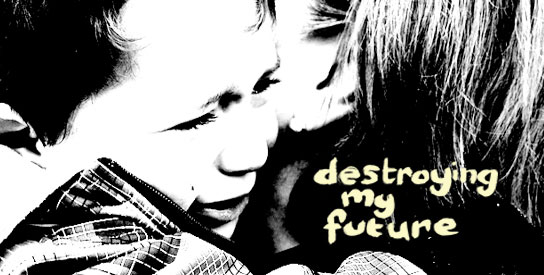
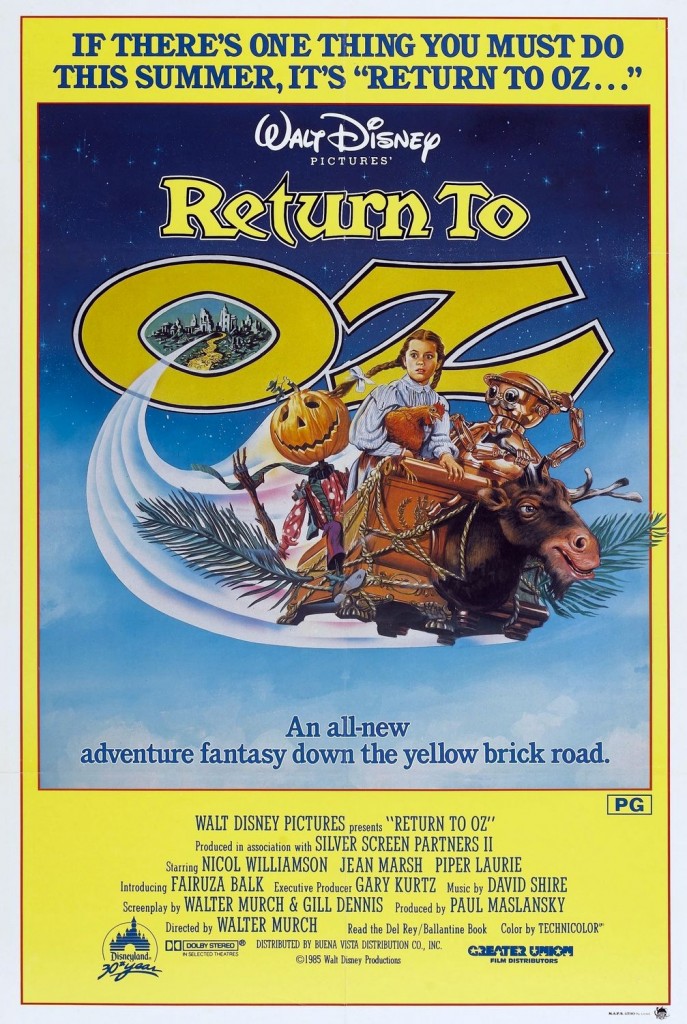
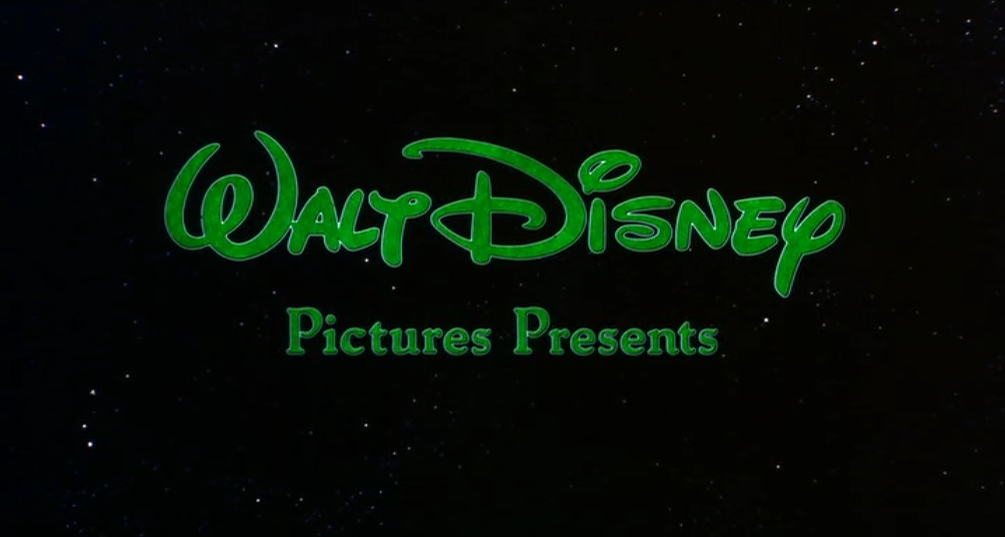
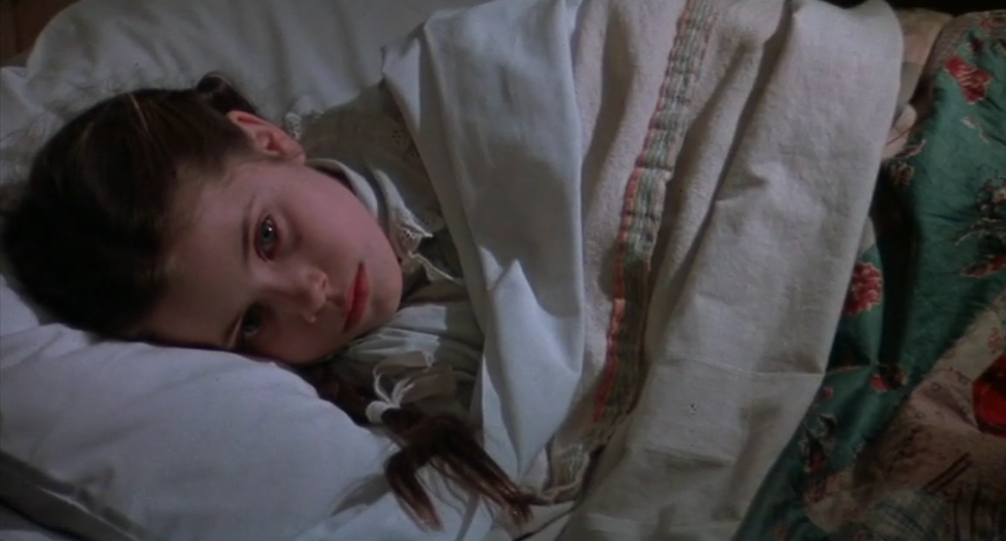
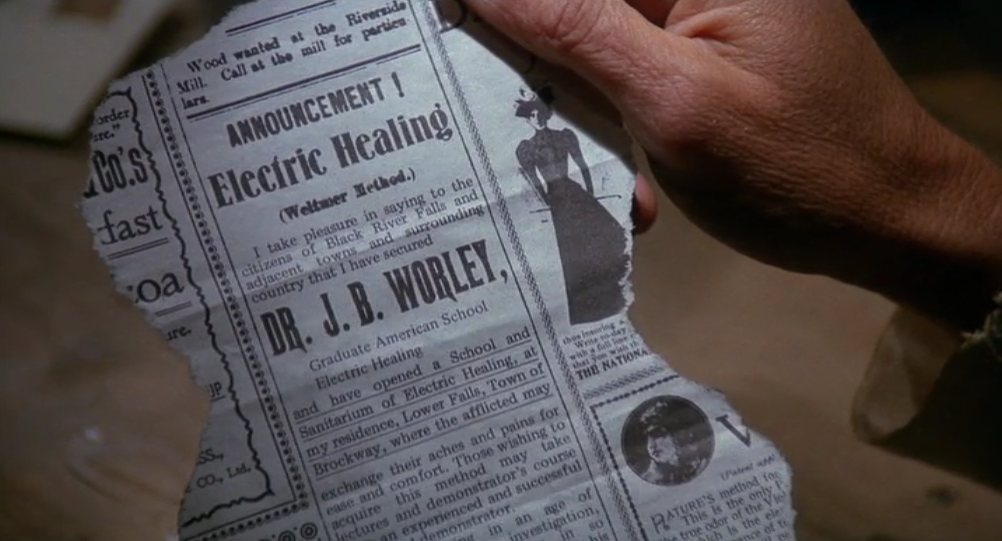
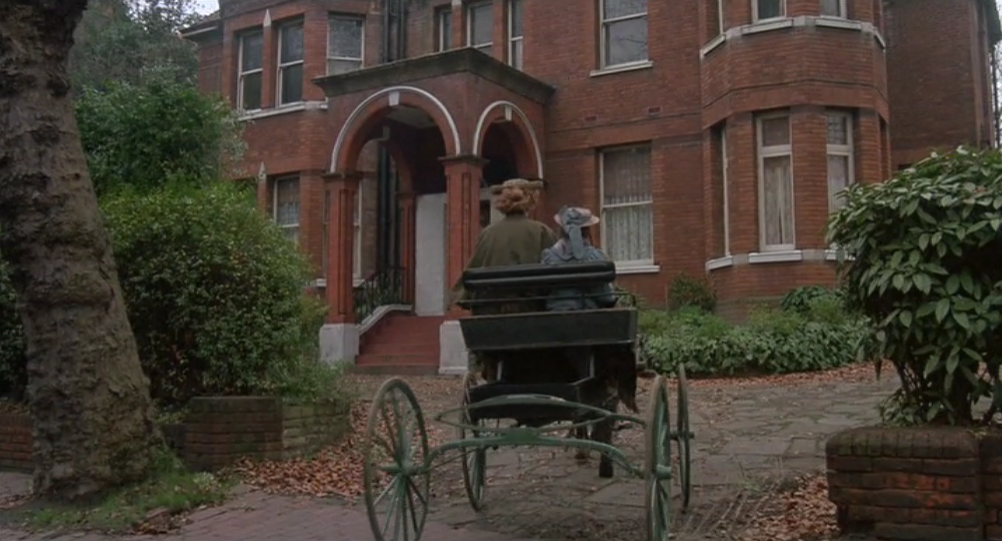
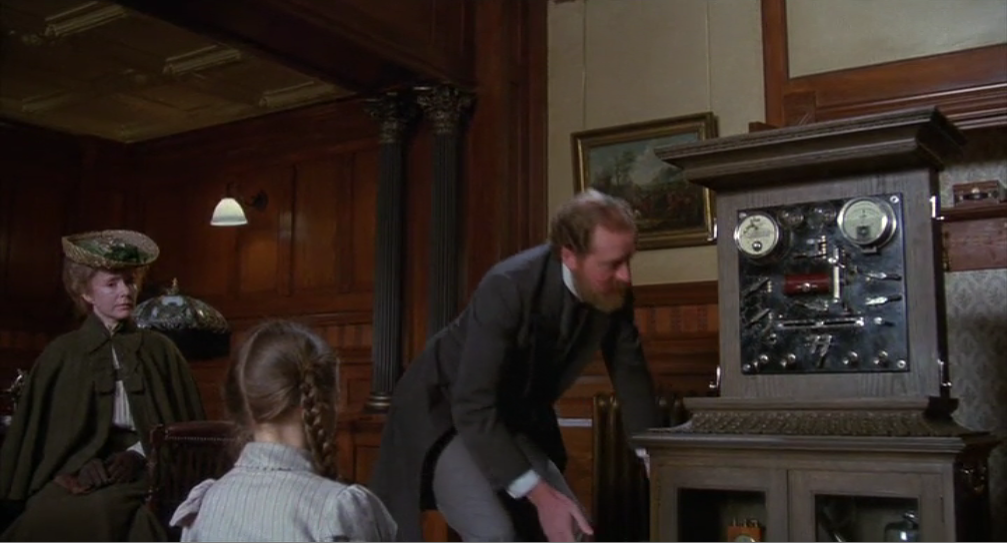
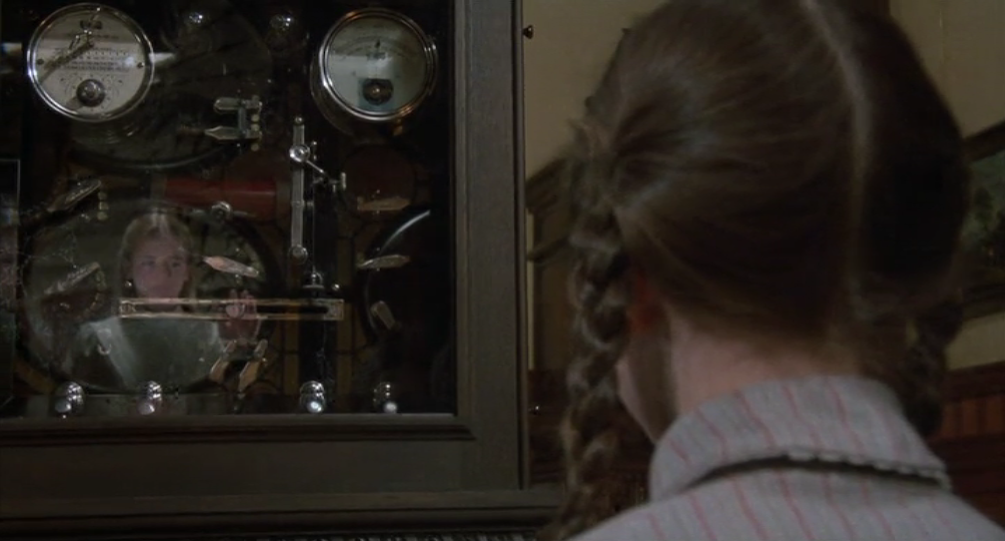
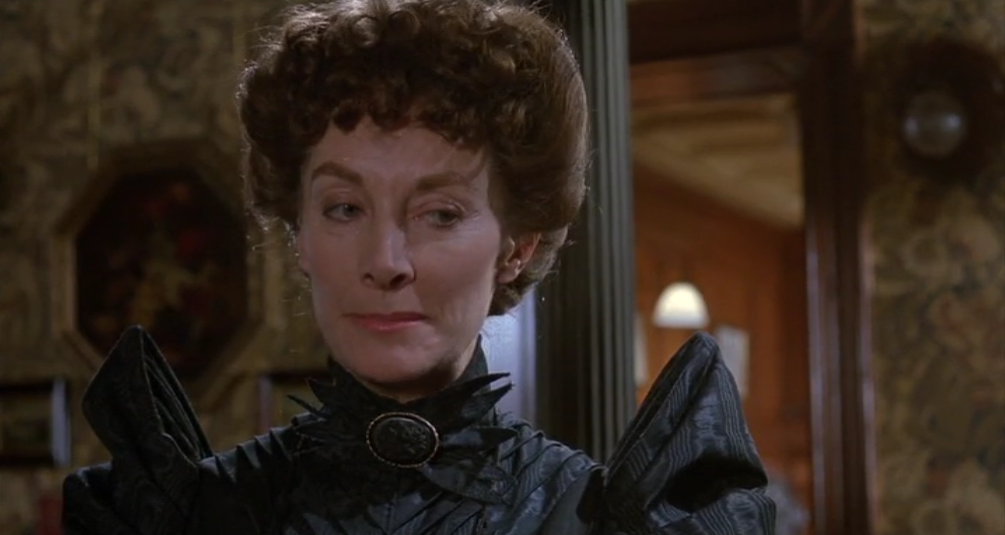
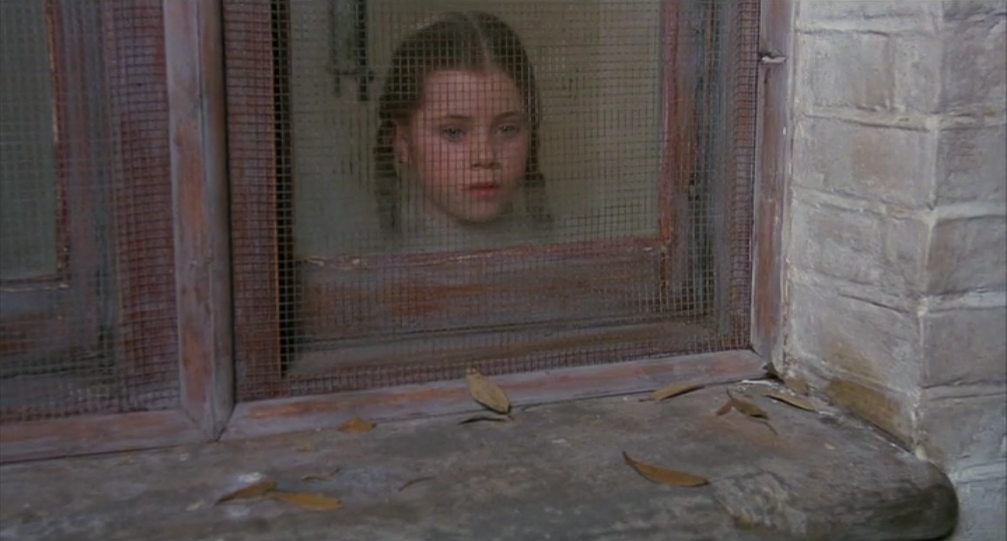
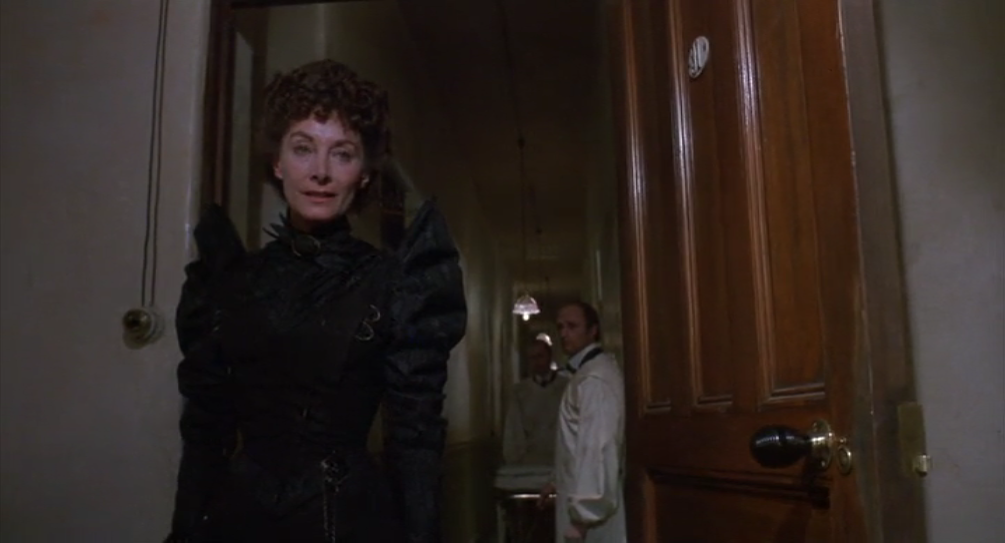

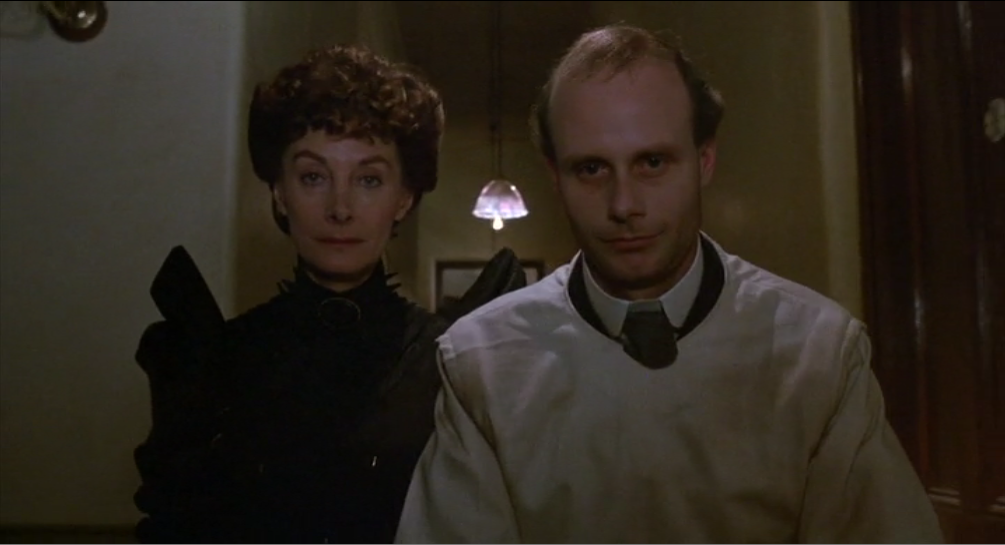
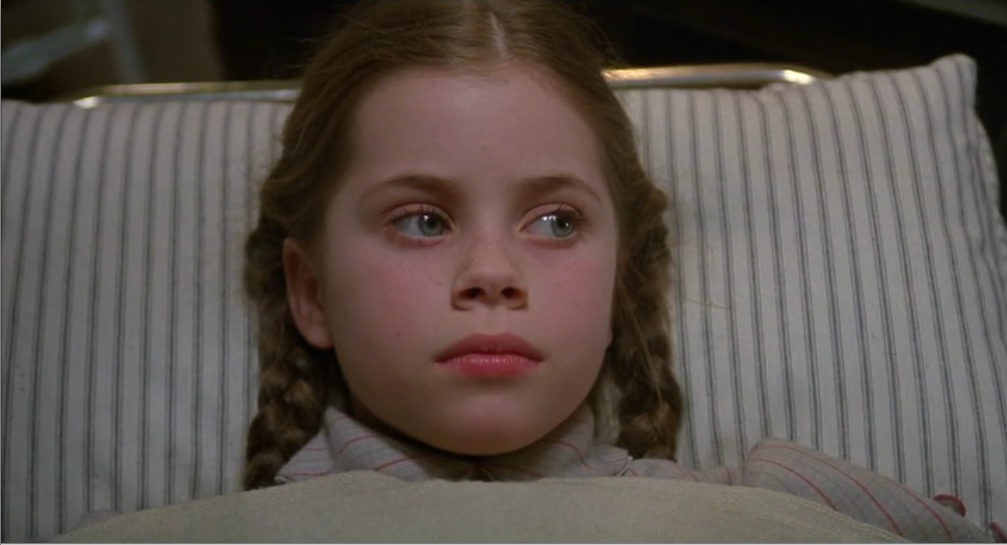
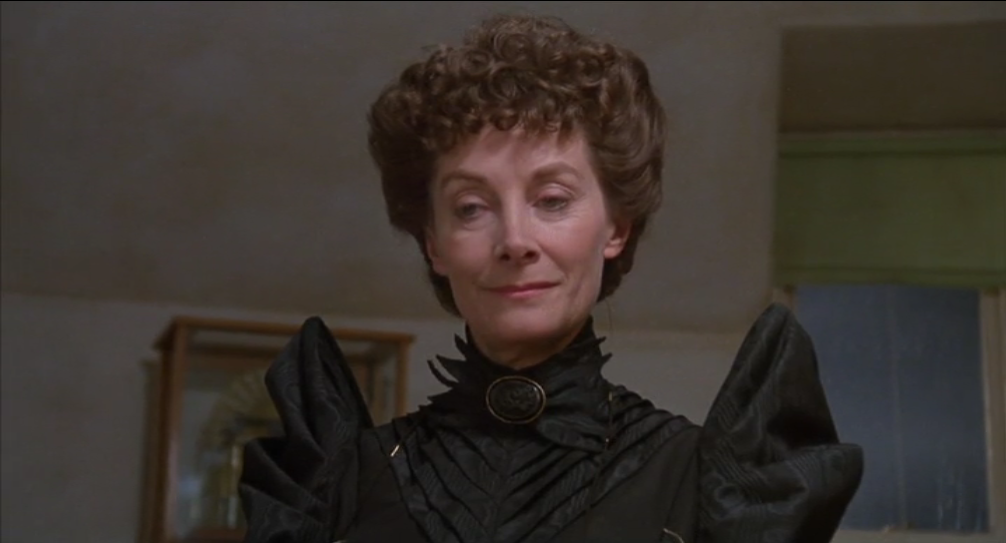
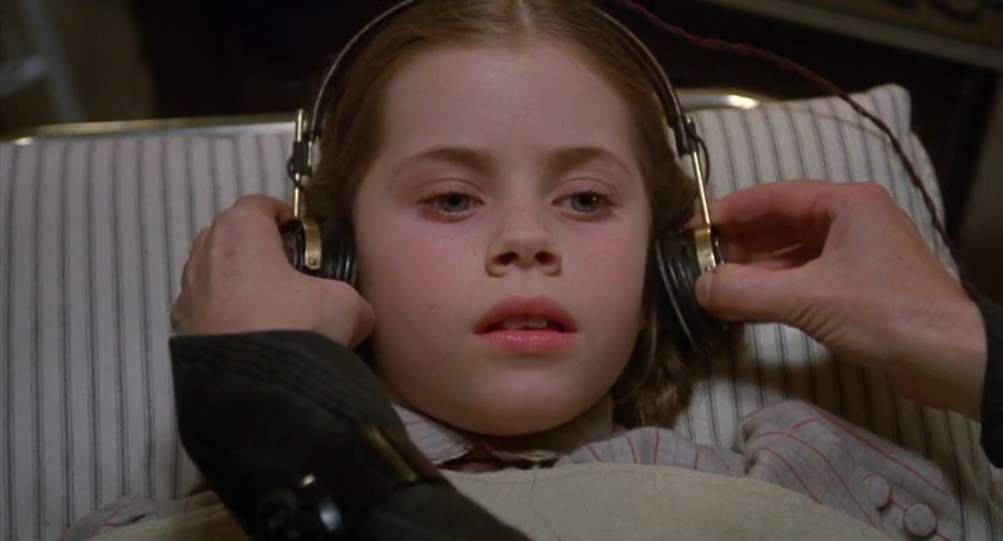
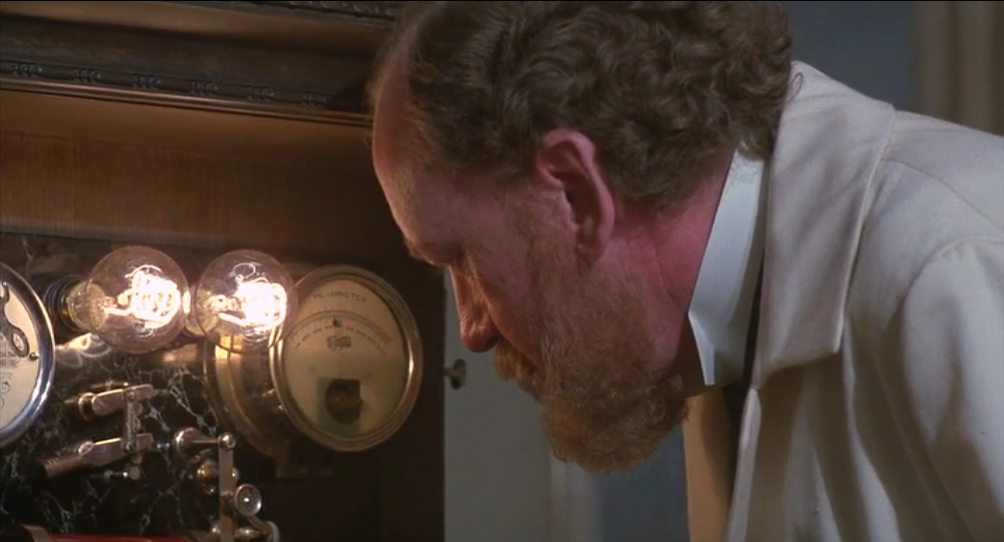
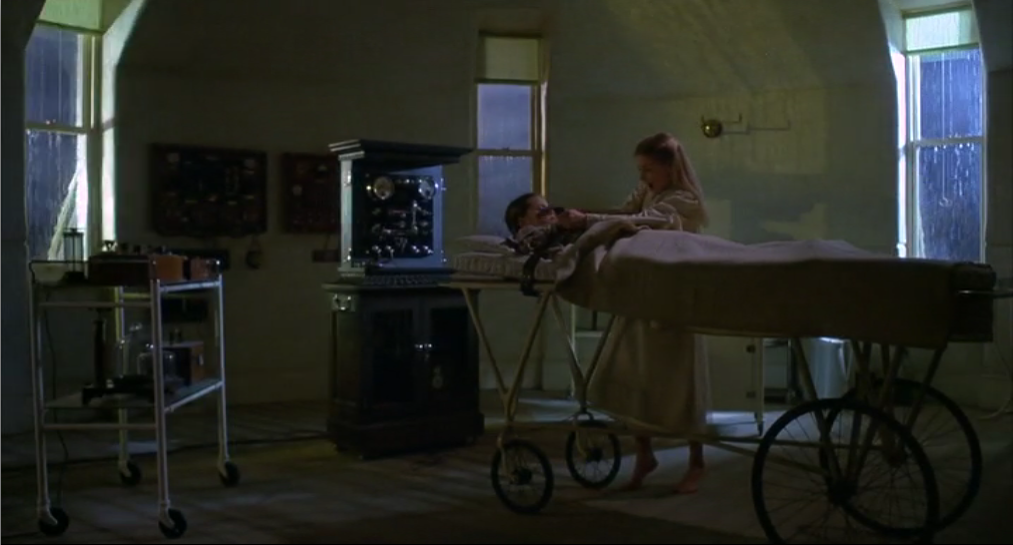
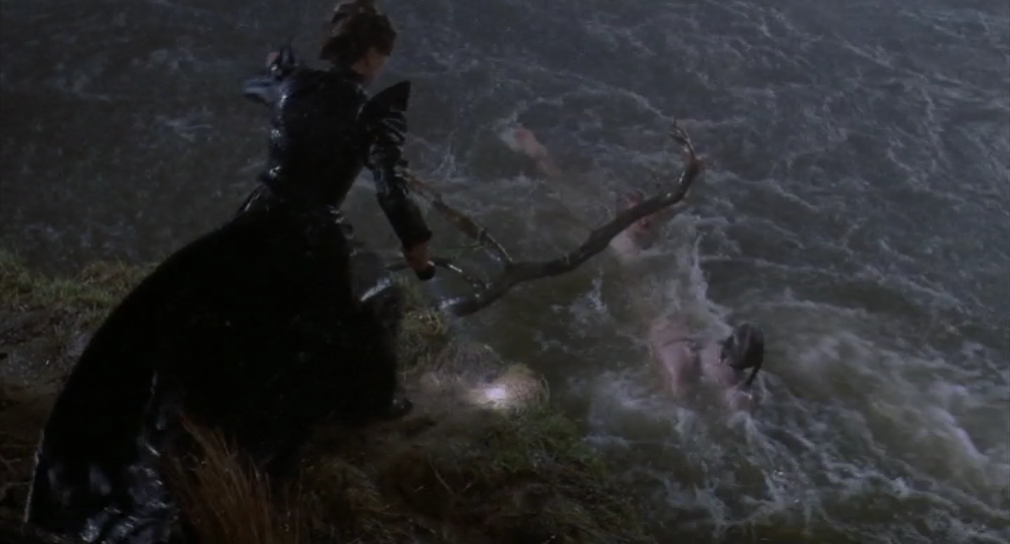
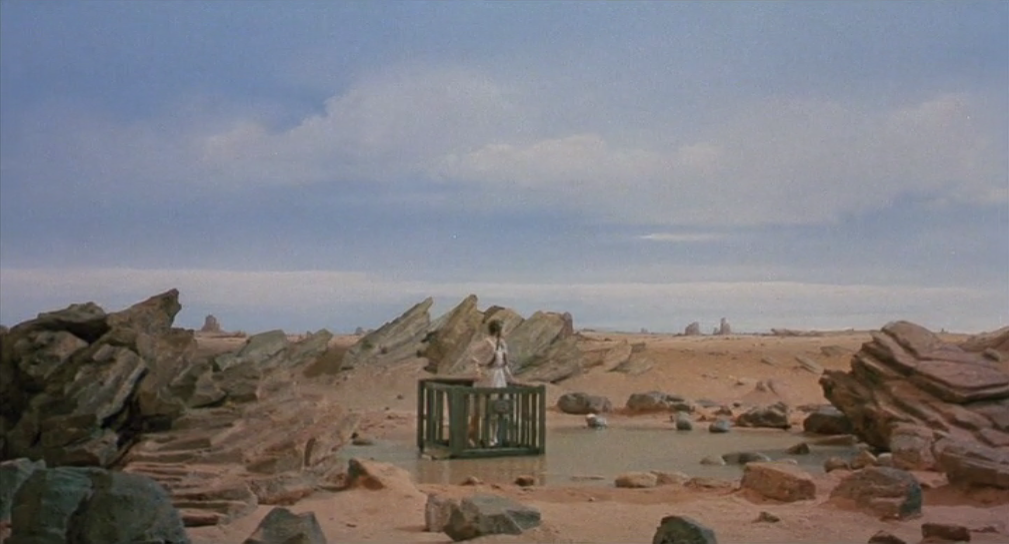
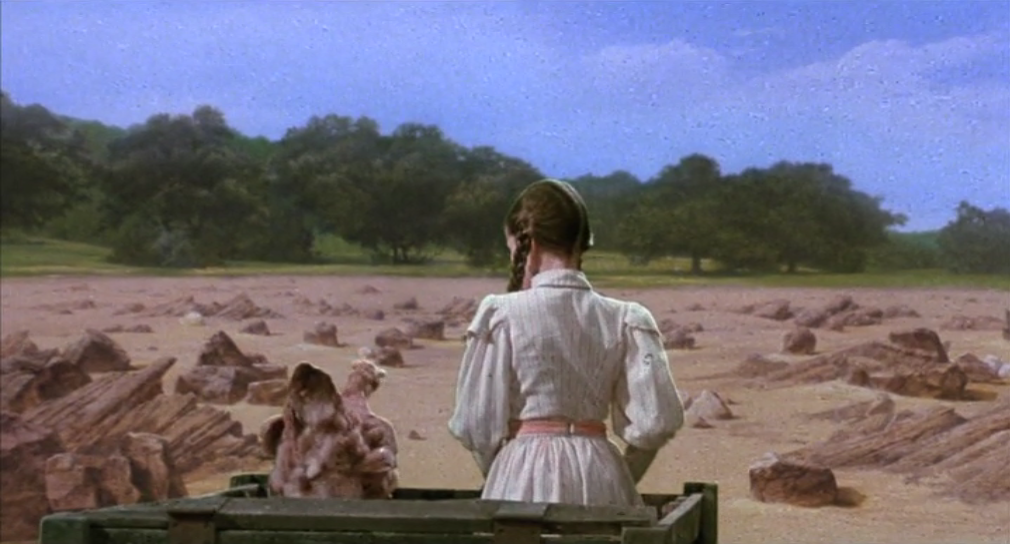
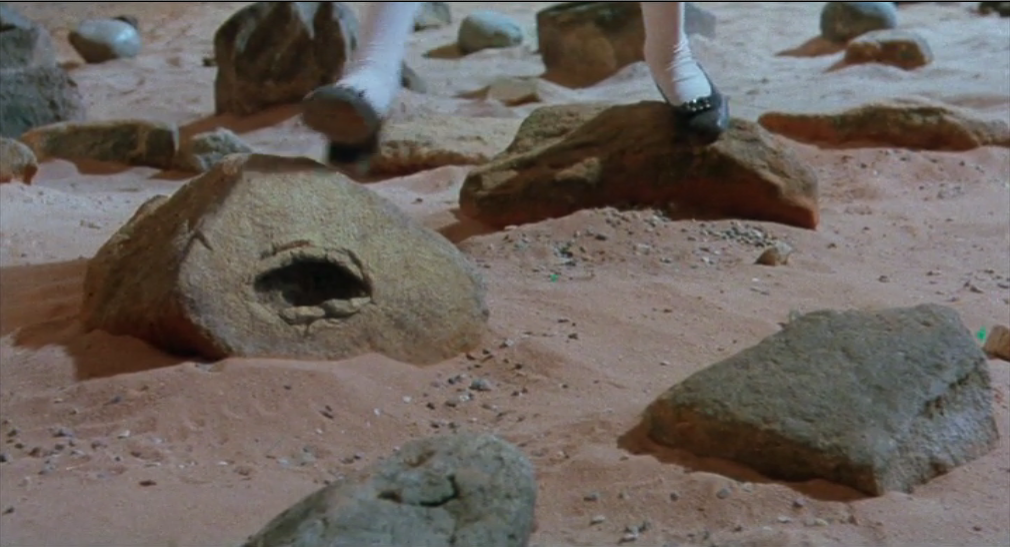
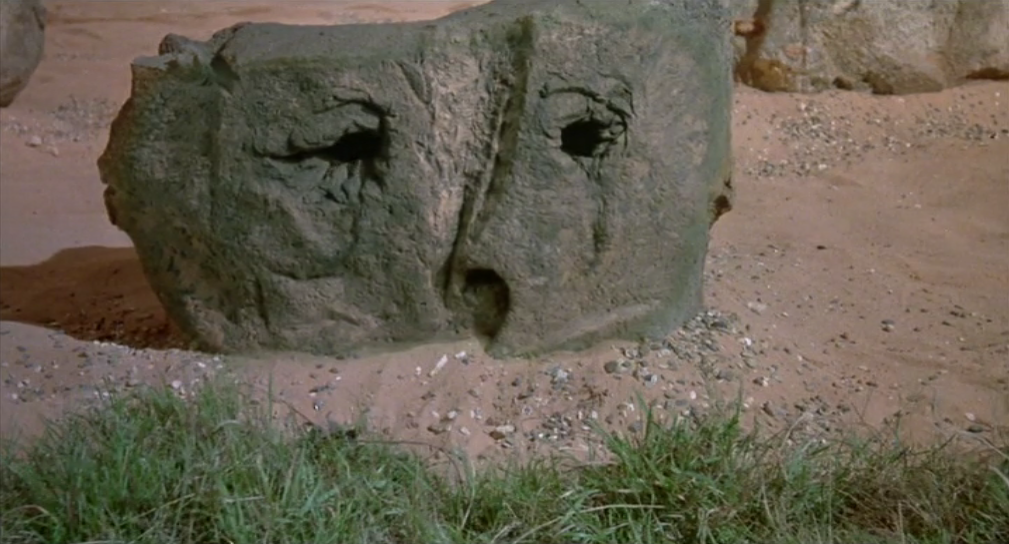
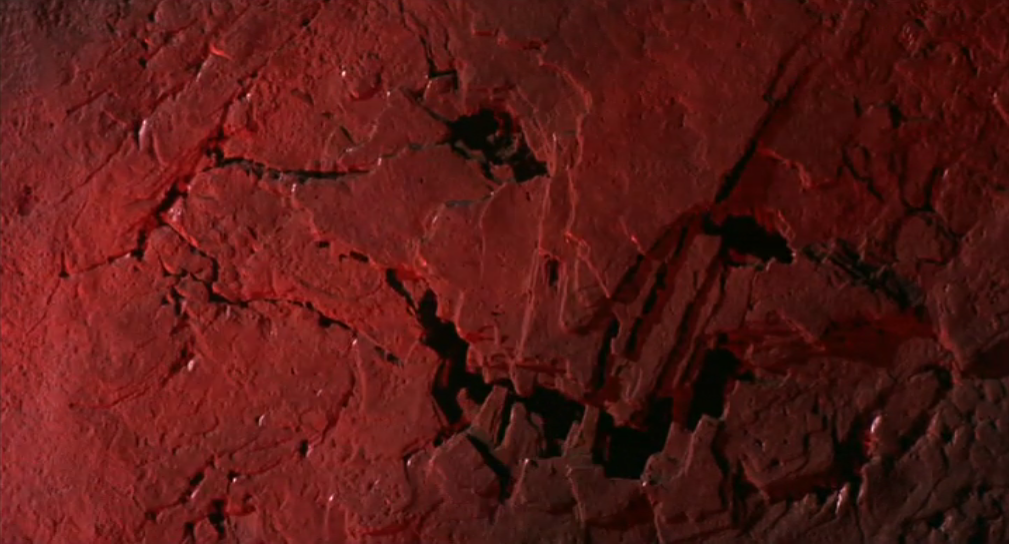
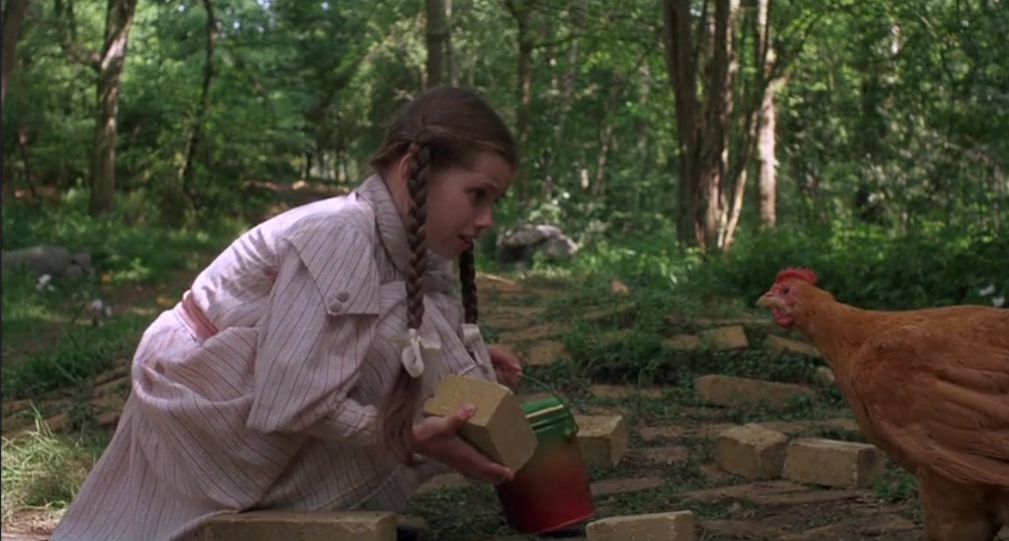
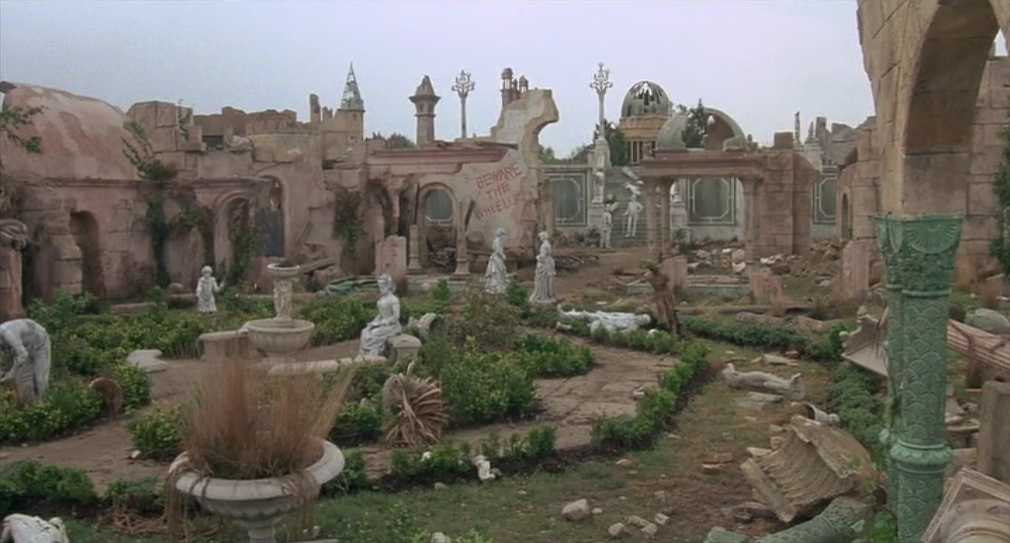
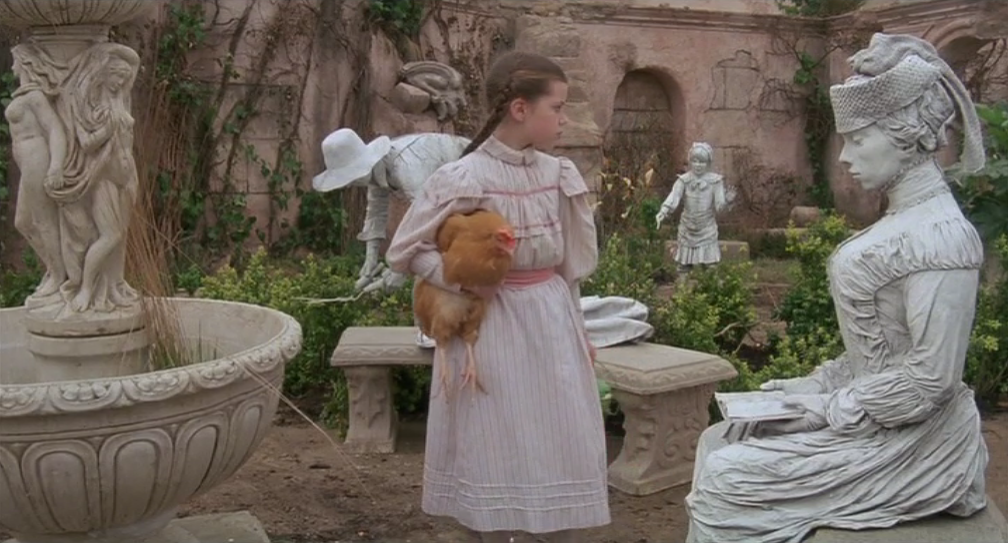
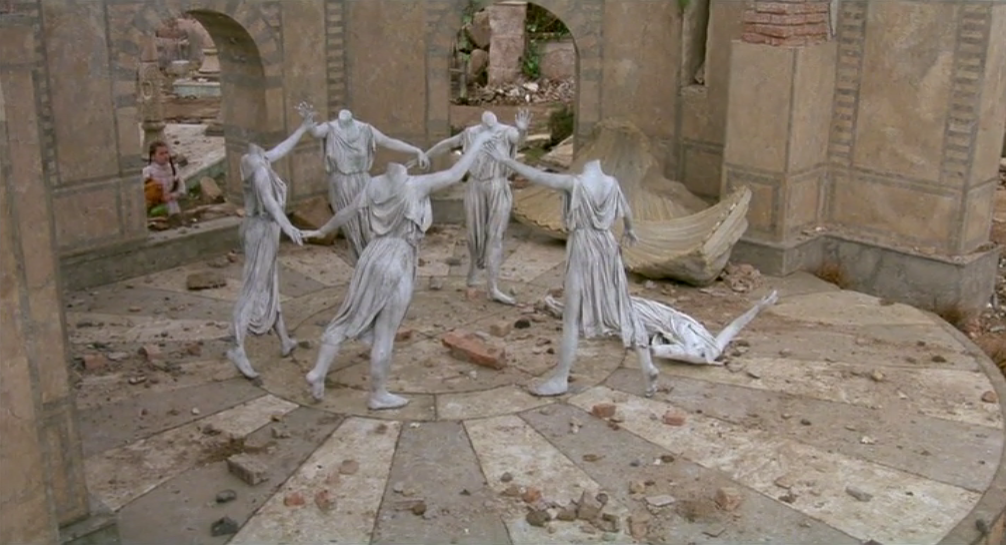
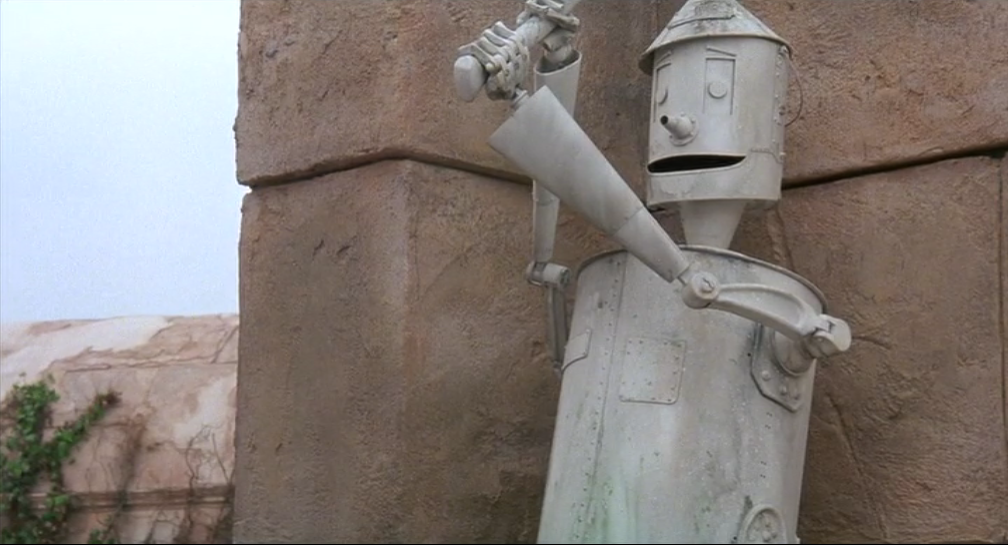
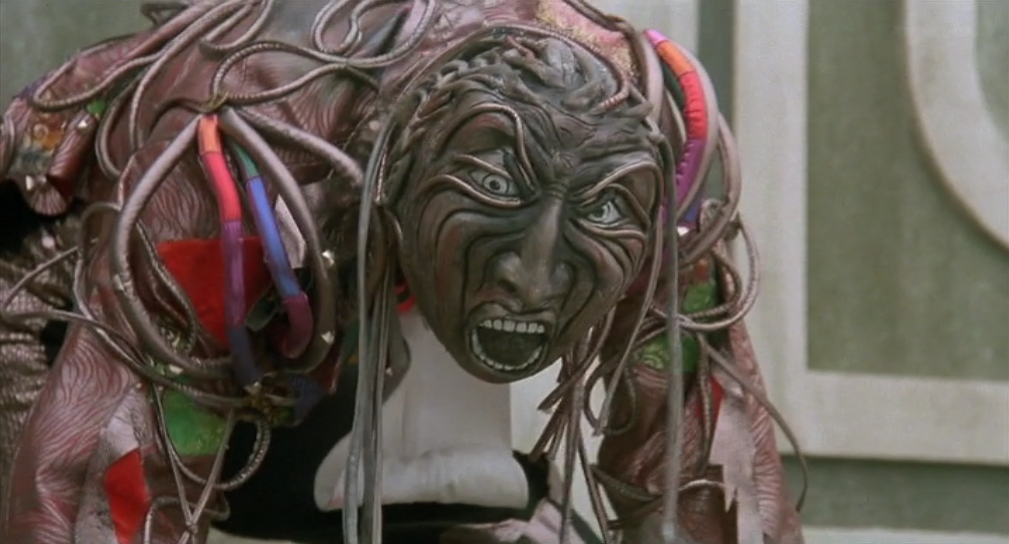
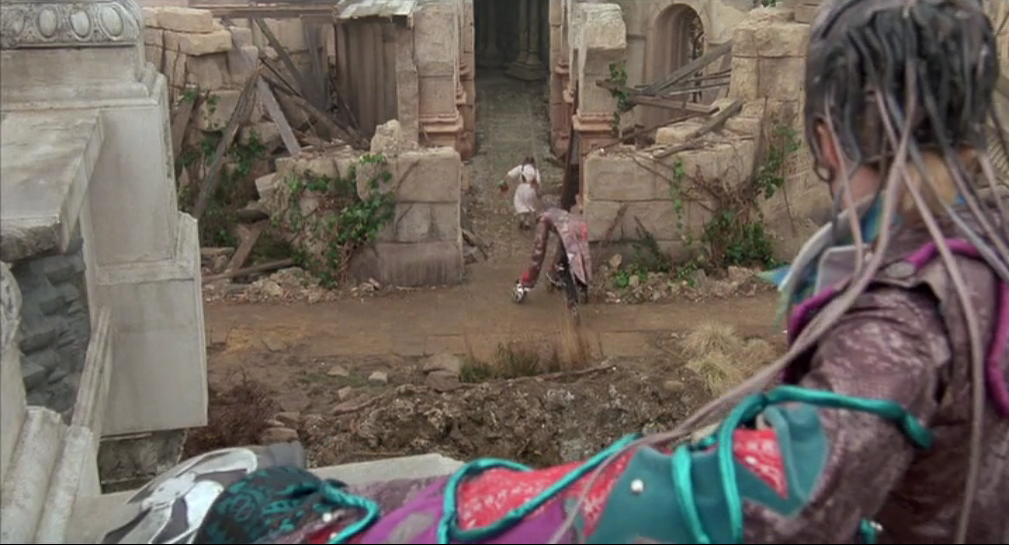
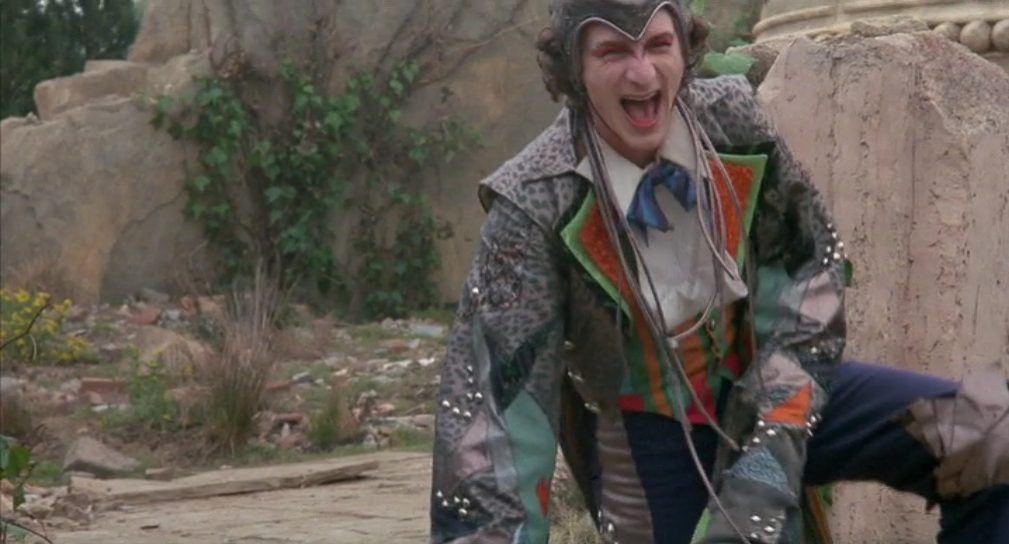
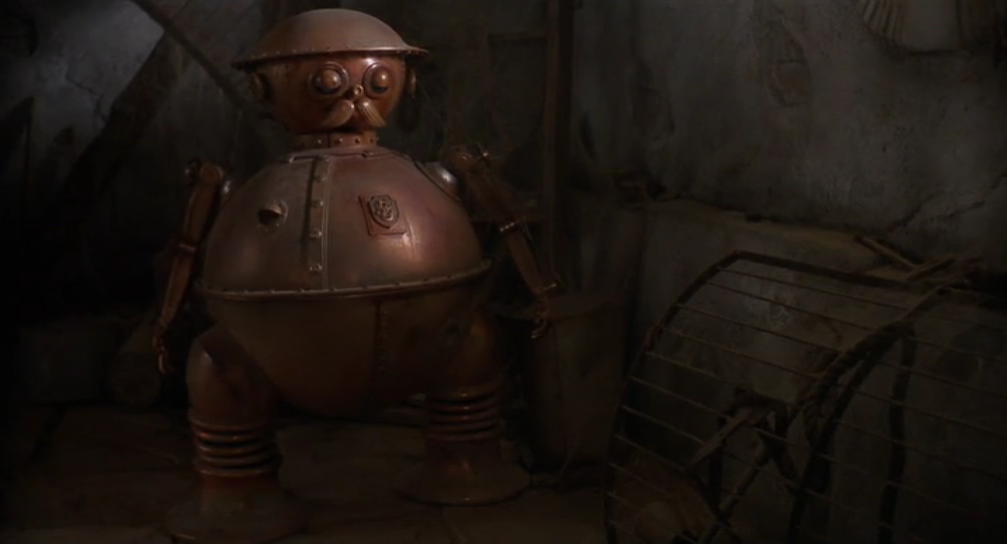
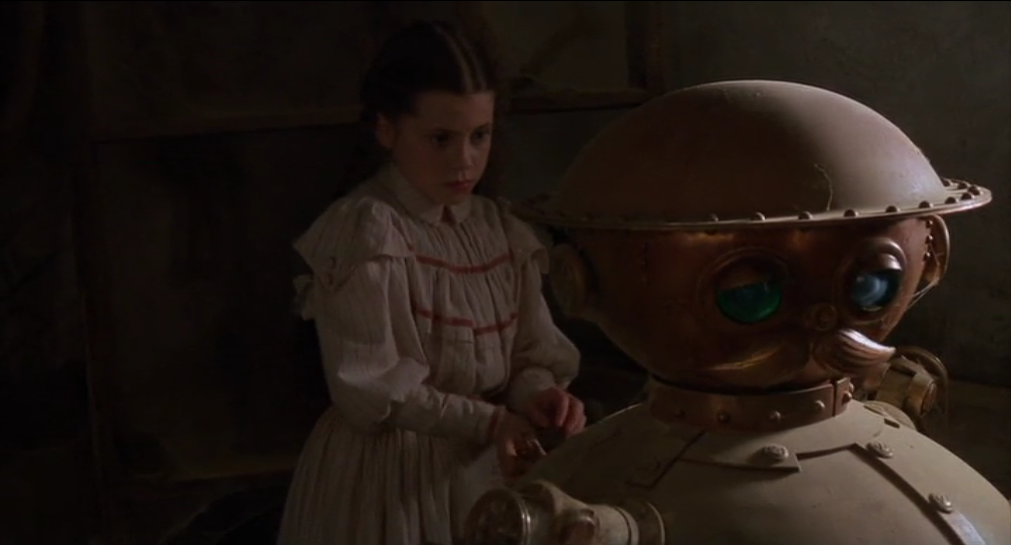
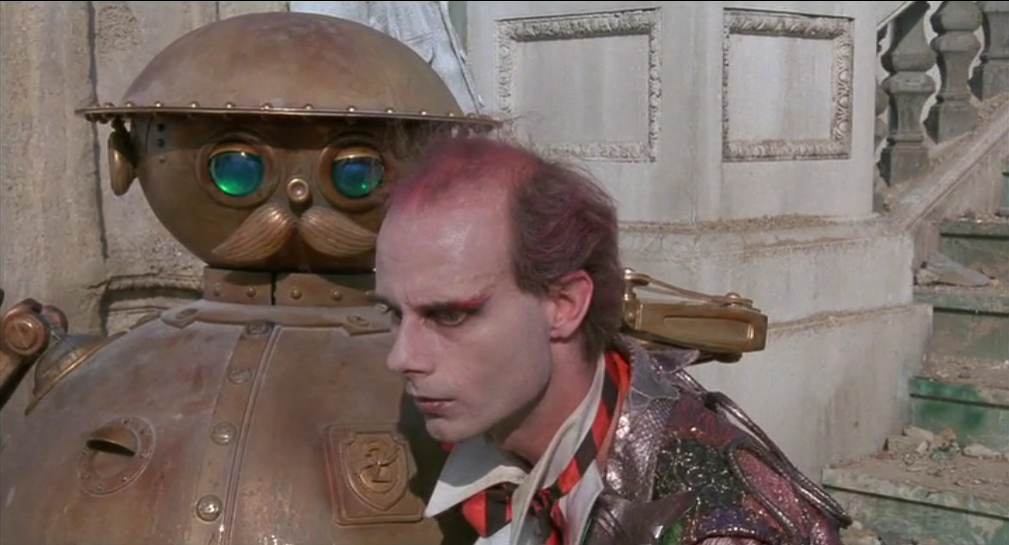
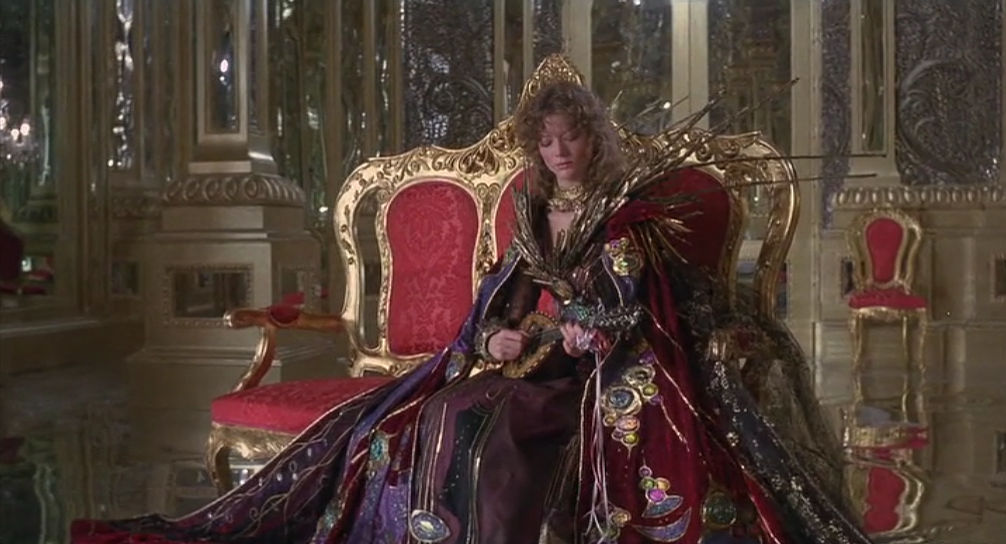
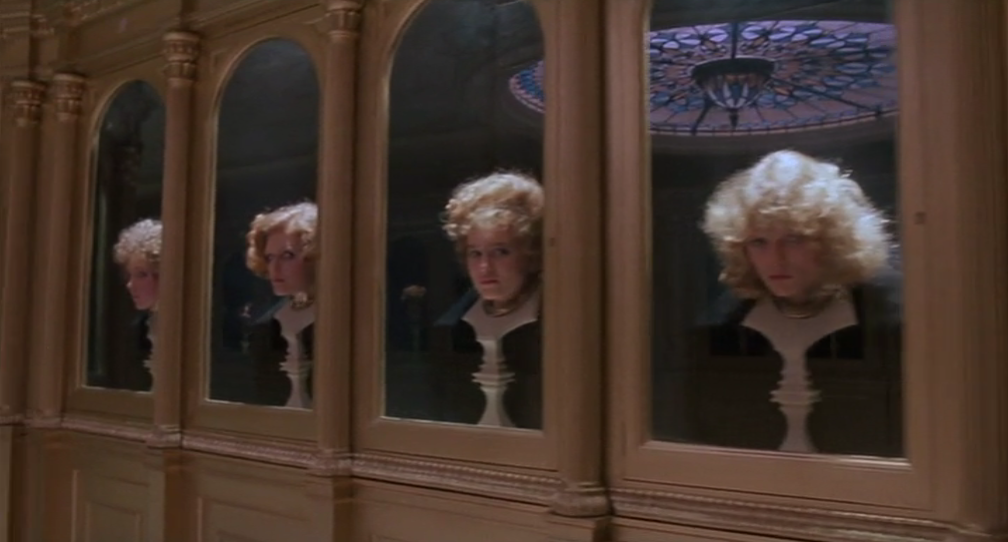
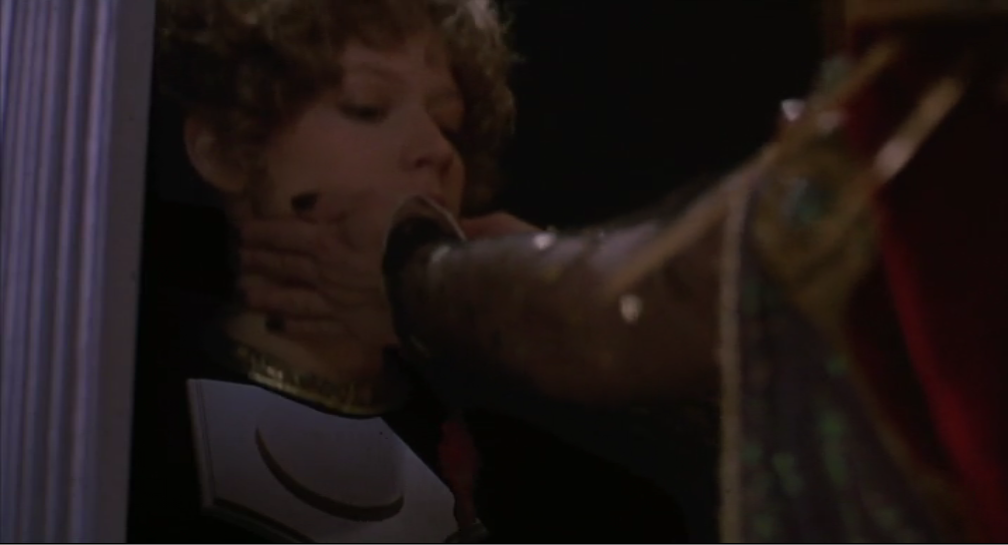
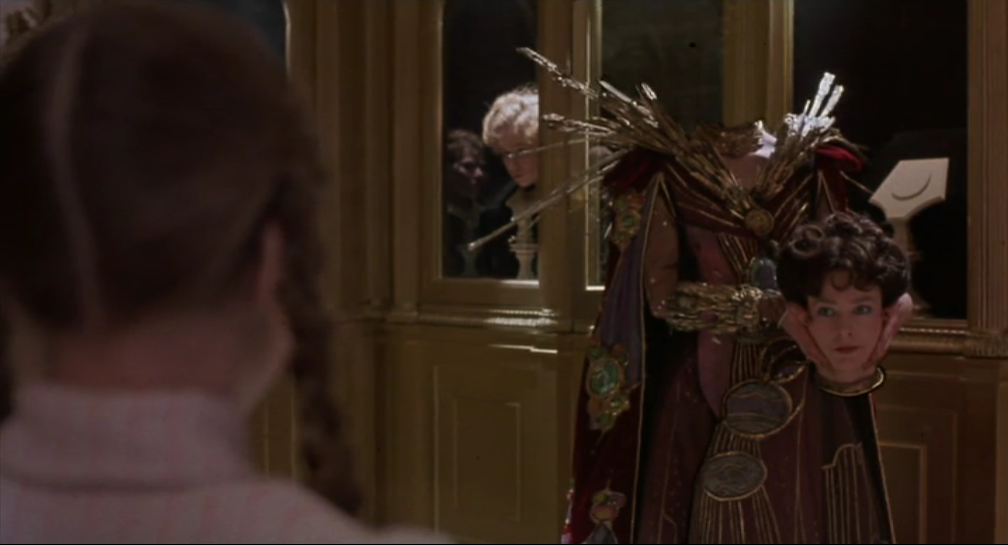
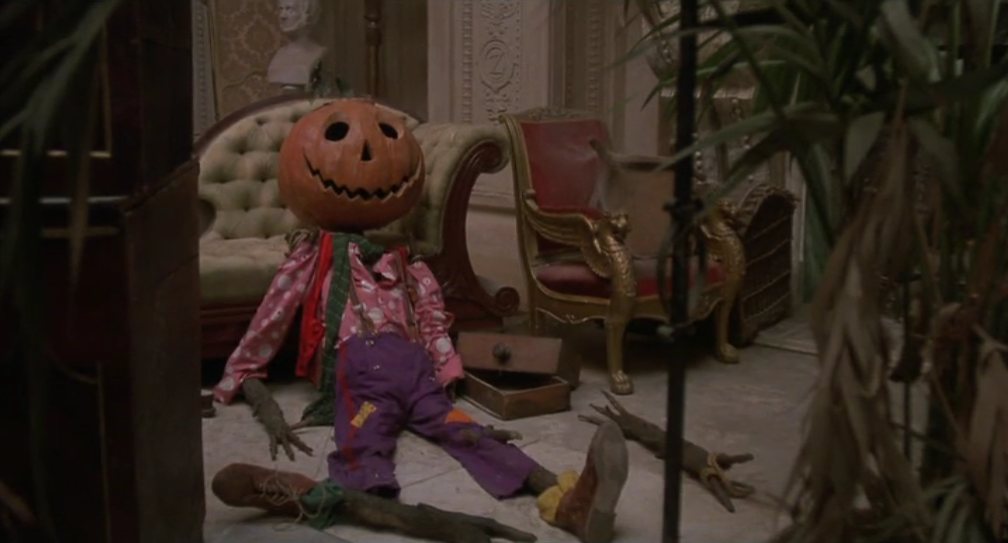
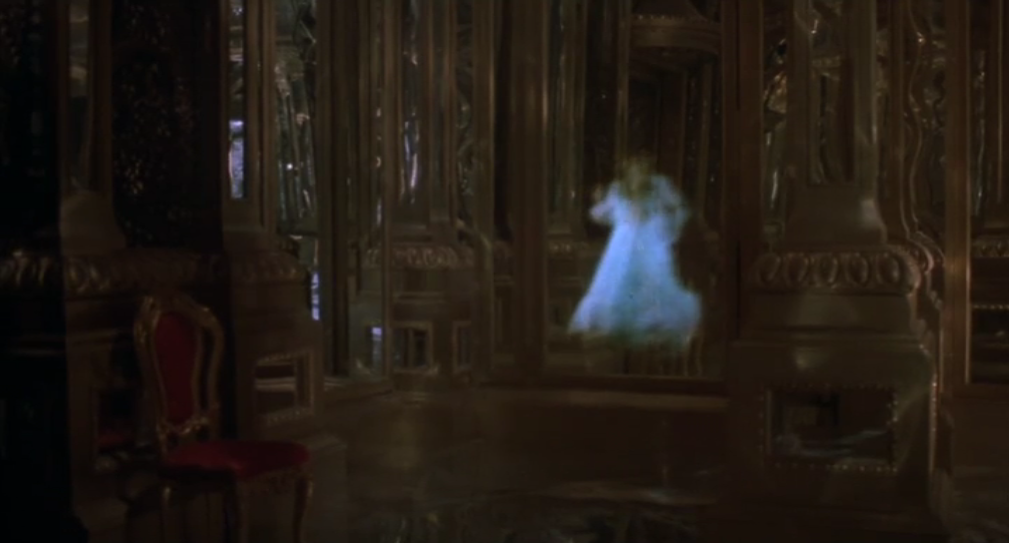
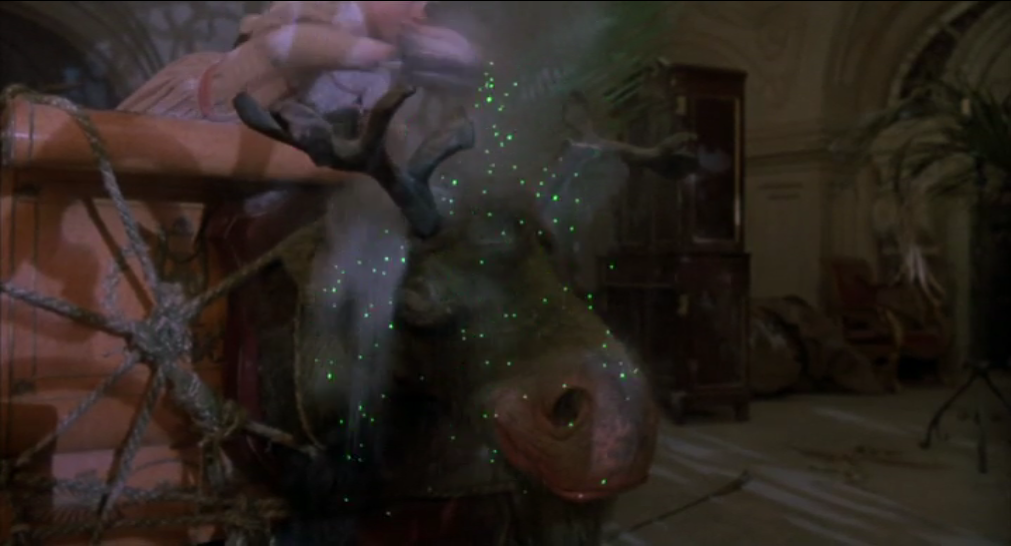
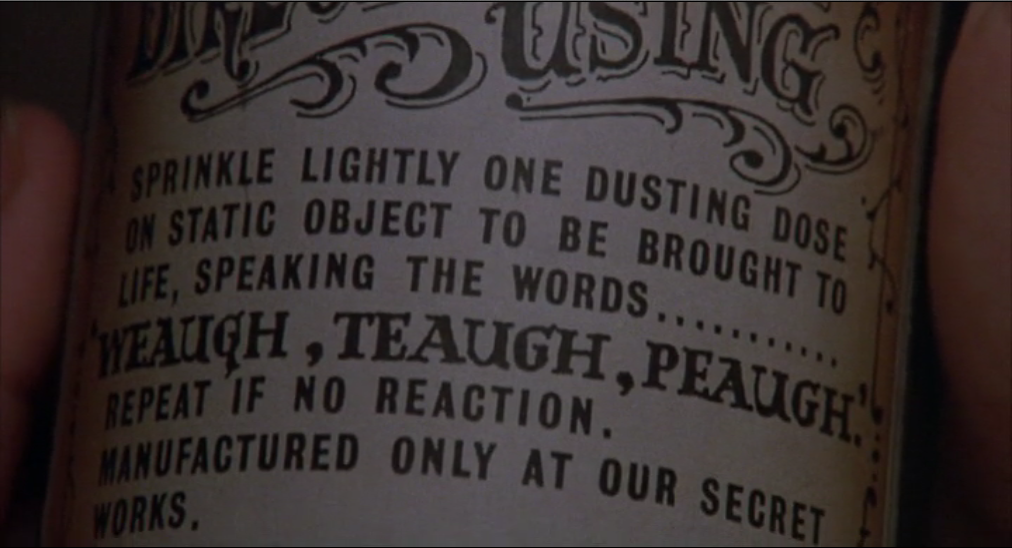
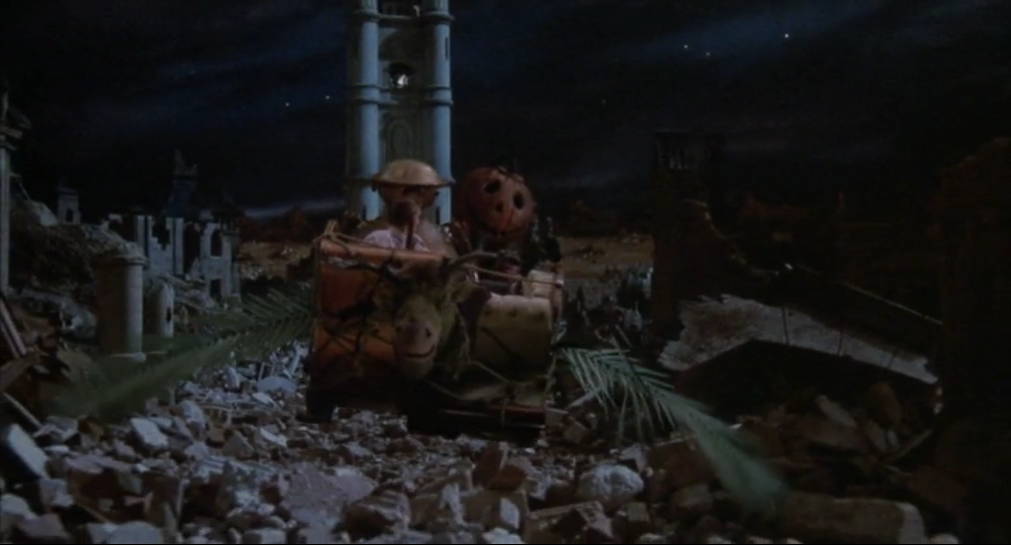
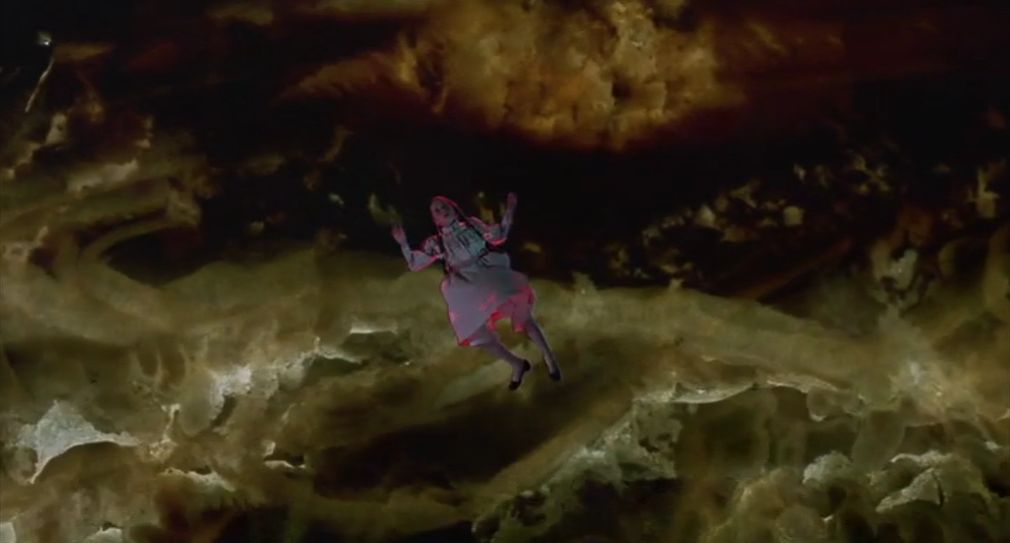
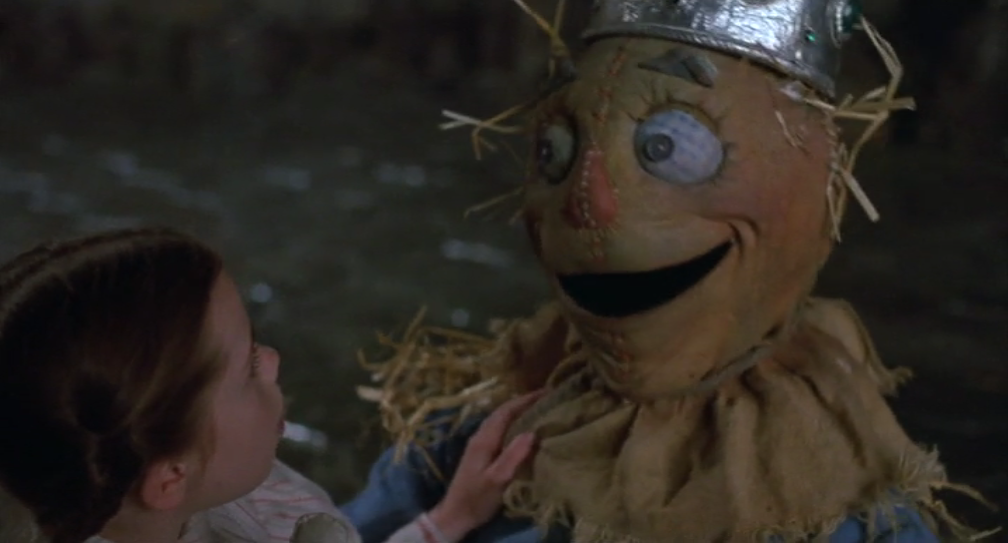
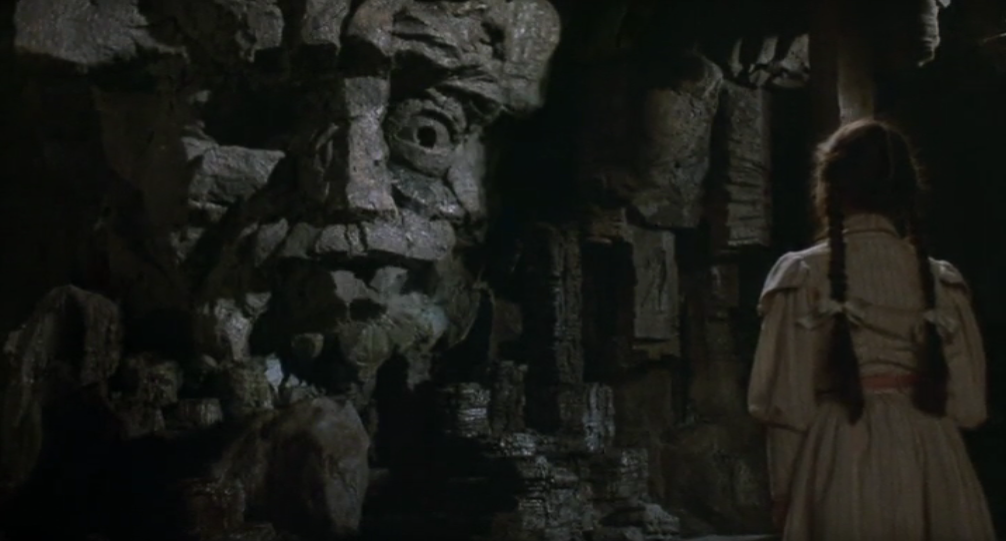
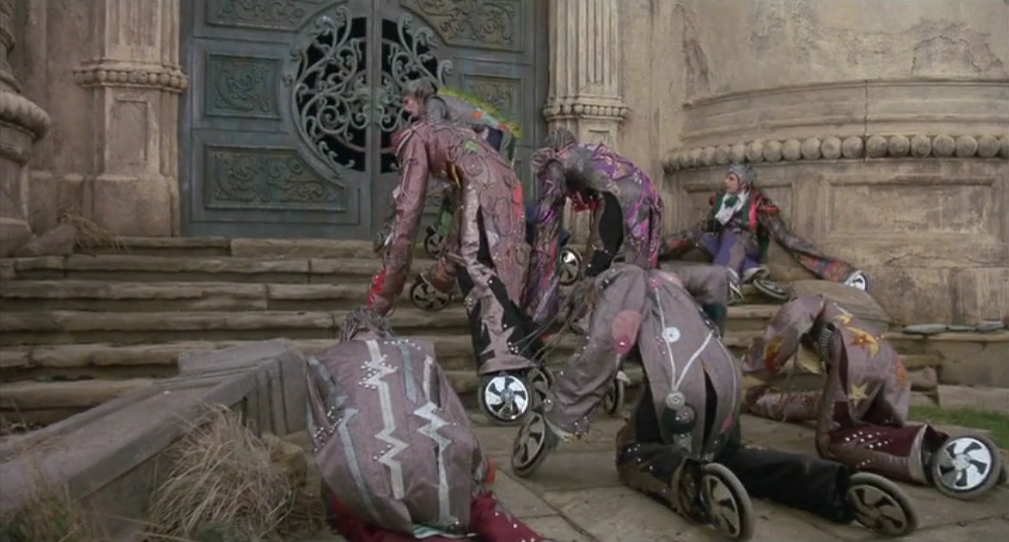
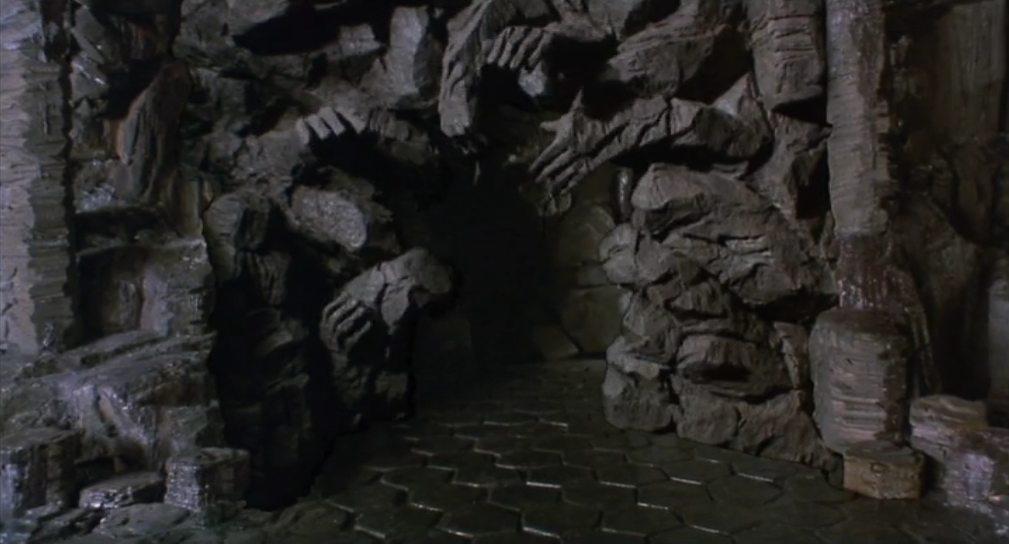
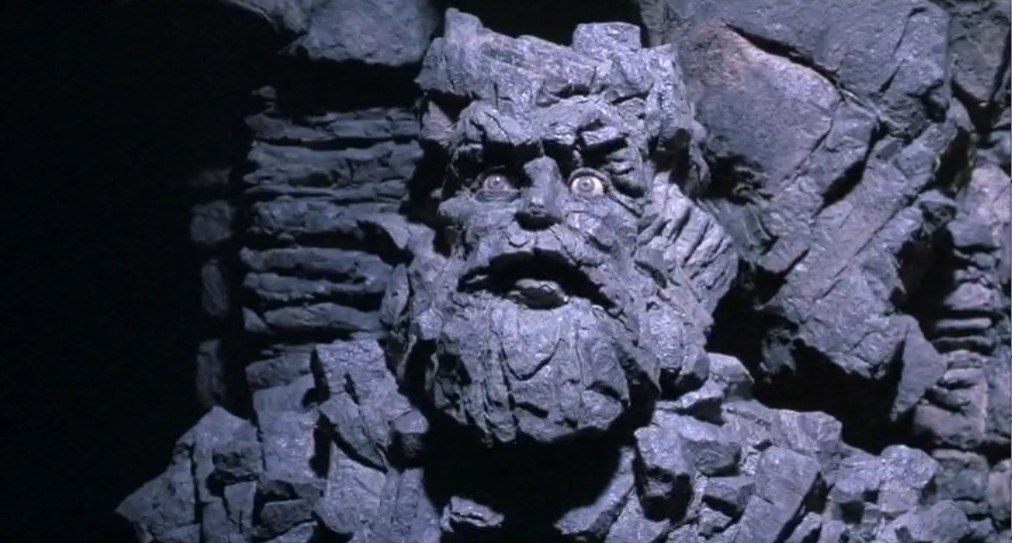
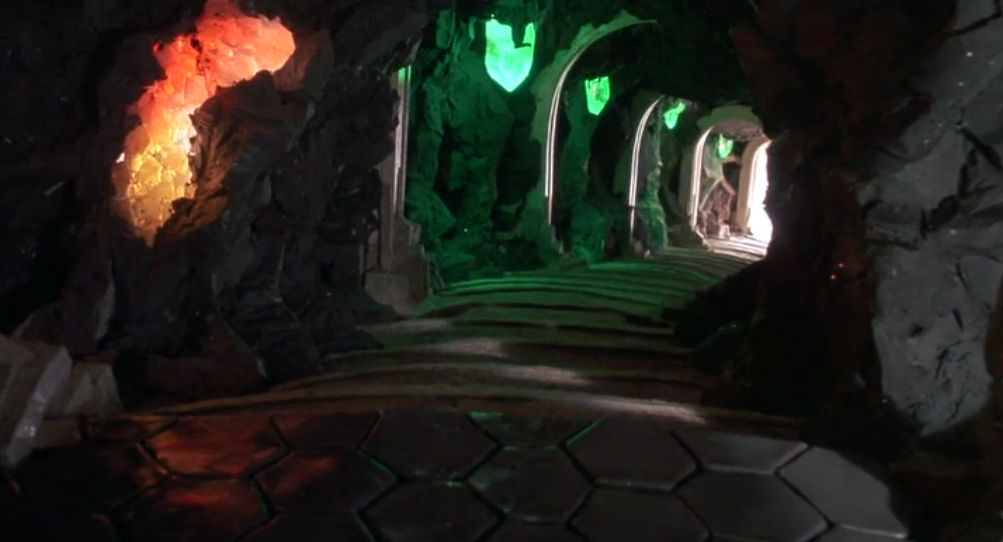
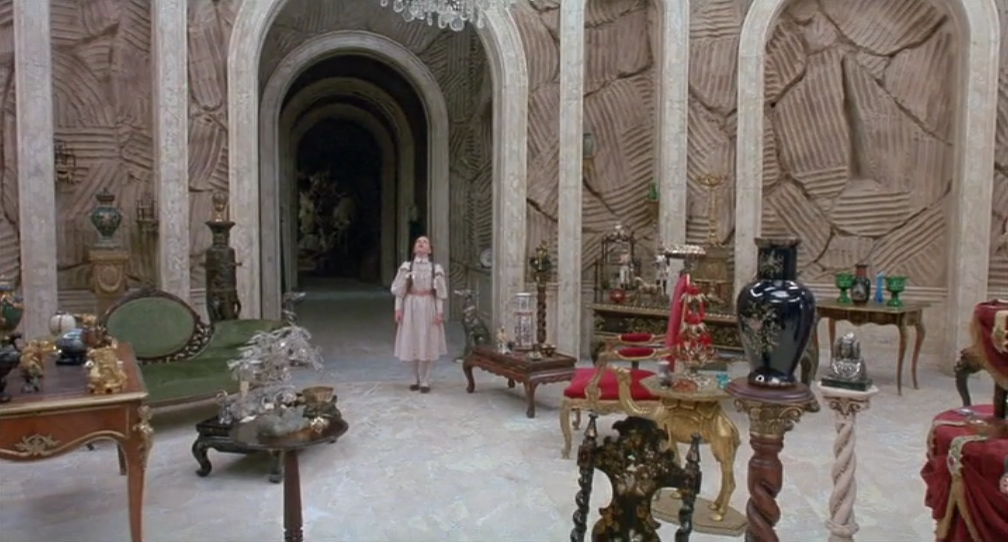
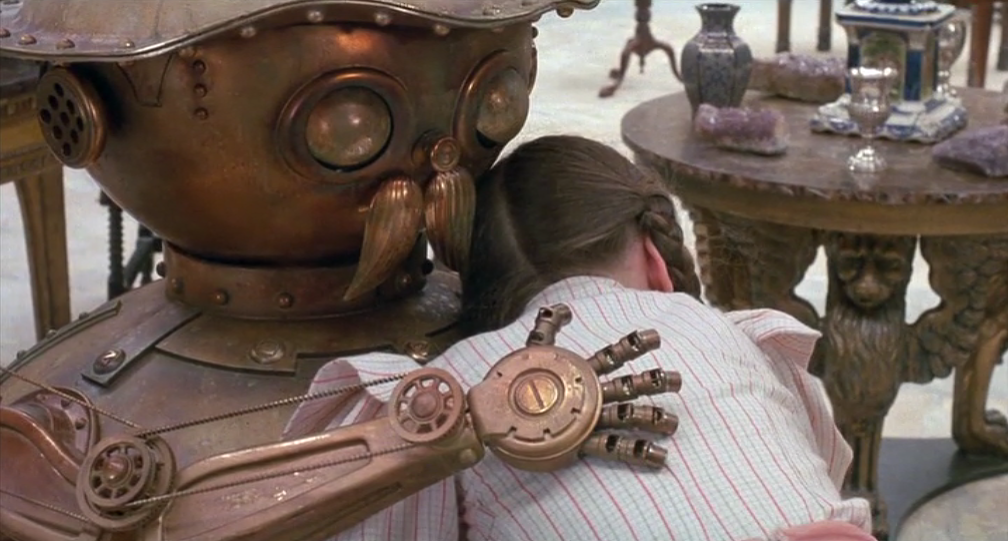

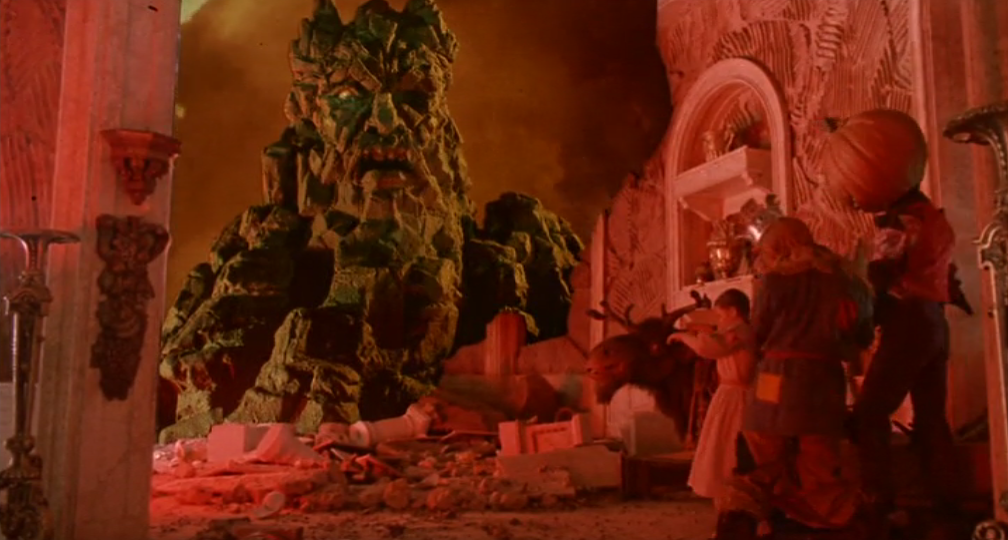
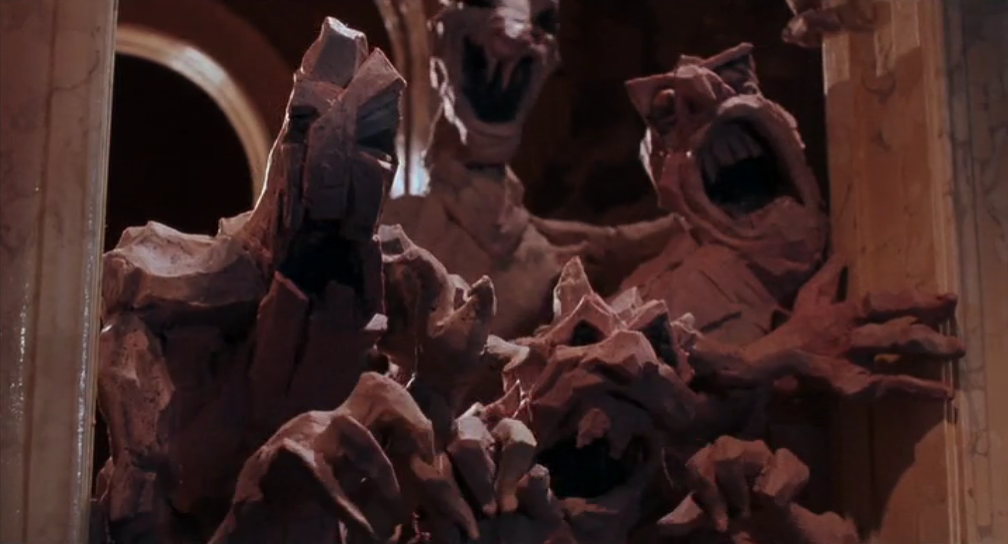
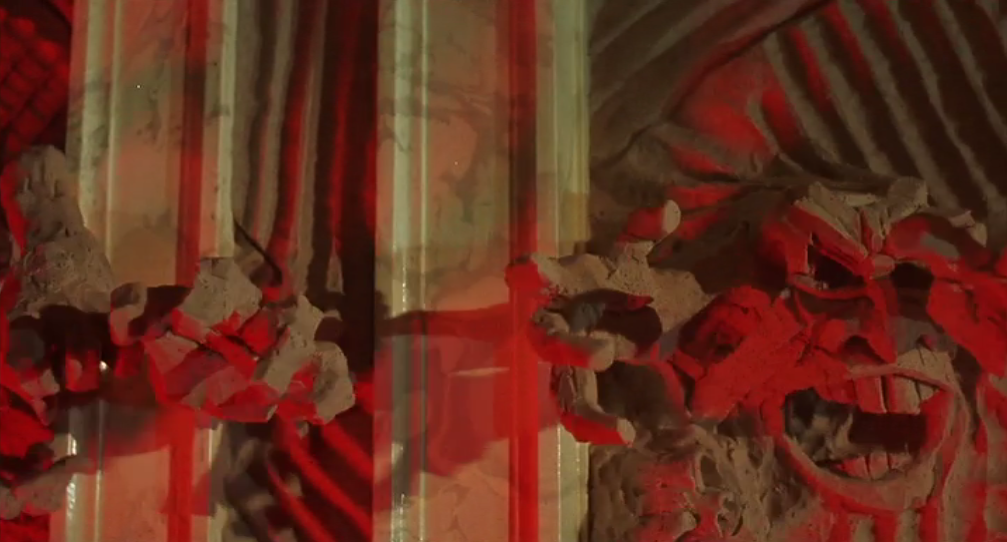
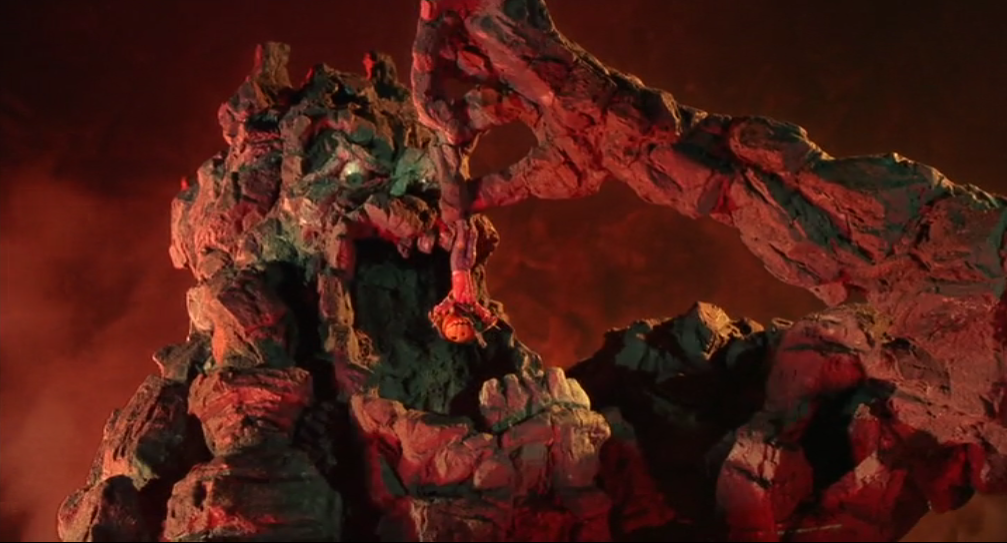
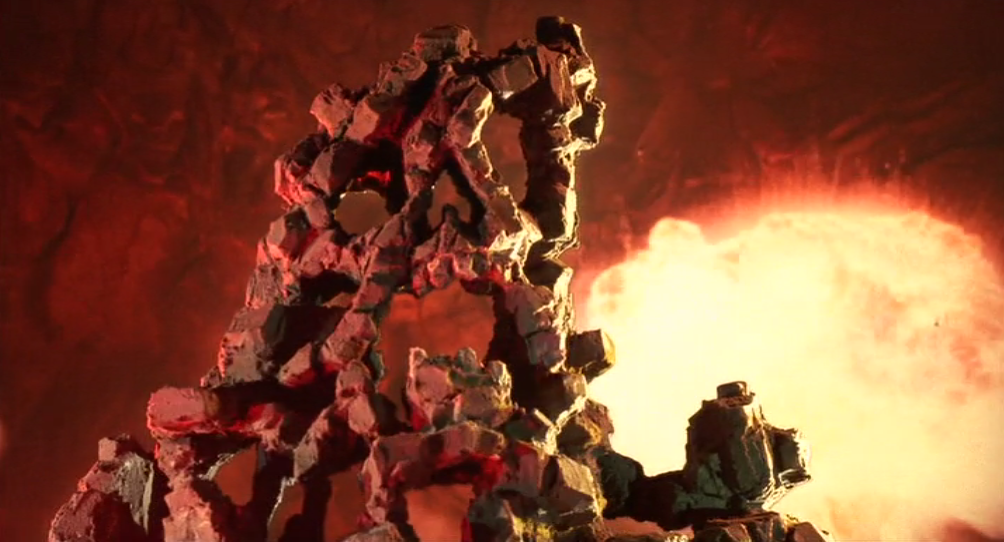





4 comments
Today I Found the Coolest Thing… « Trash Complex says:
Mar 31, 2012
[…] to Oz’ is long and complicated. Rather than go into detail here, I’ll direct you to this epic piece I wrote on Mondo Exploito. I was in a rather poor bookshop today. It was fairly ordinary except for […]
Shelley says:
Apr 1, 2012
This is a fantastic post. Yep, Princess Mombi was pretty scary but it was being allowed to watch Twin Peaks by my stoned father that gave me nightmares as a kid, not this lol.
David says:
May 23, 2013
Excellent post! Ah yes, that fear still exists deep within me and this movie is a constant reminder of that. Still, I find it hard to resist watching!
burntcopper says:
Jul 4, 2015
I read the book of the film as a kid and remember it looking incredibly creepy, then saw the film for the first time a few months ago and bloody hell it’s supreme creepy.